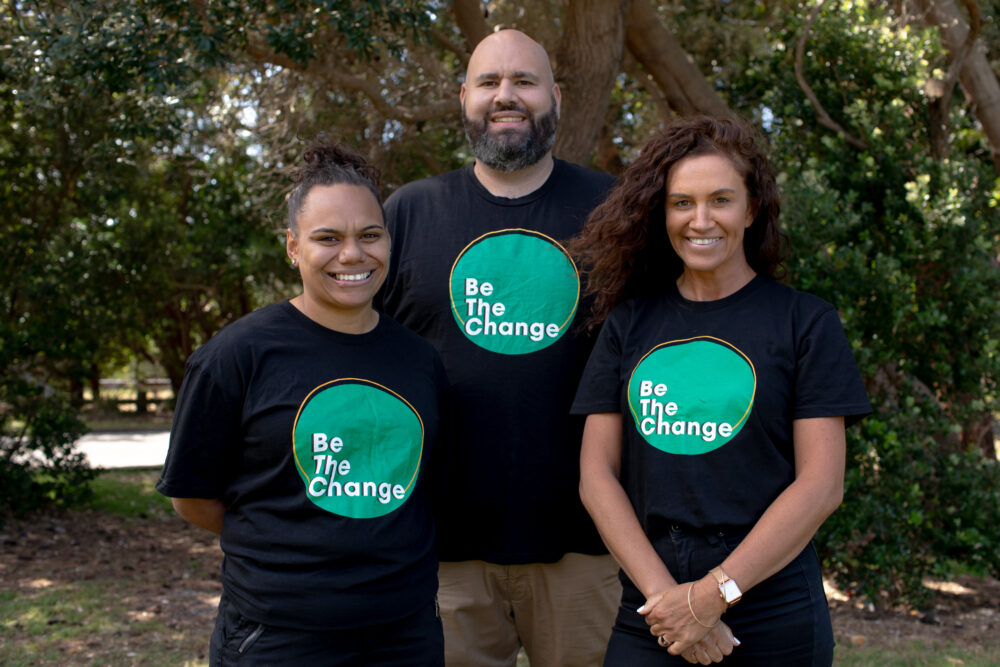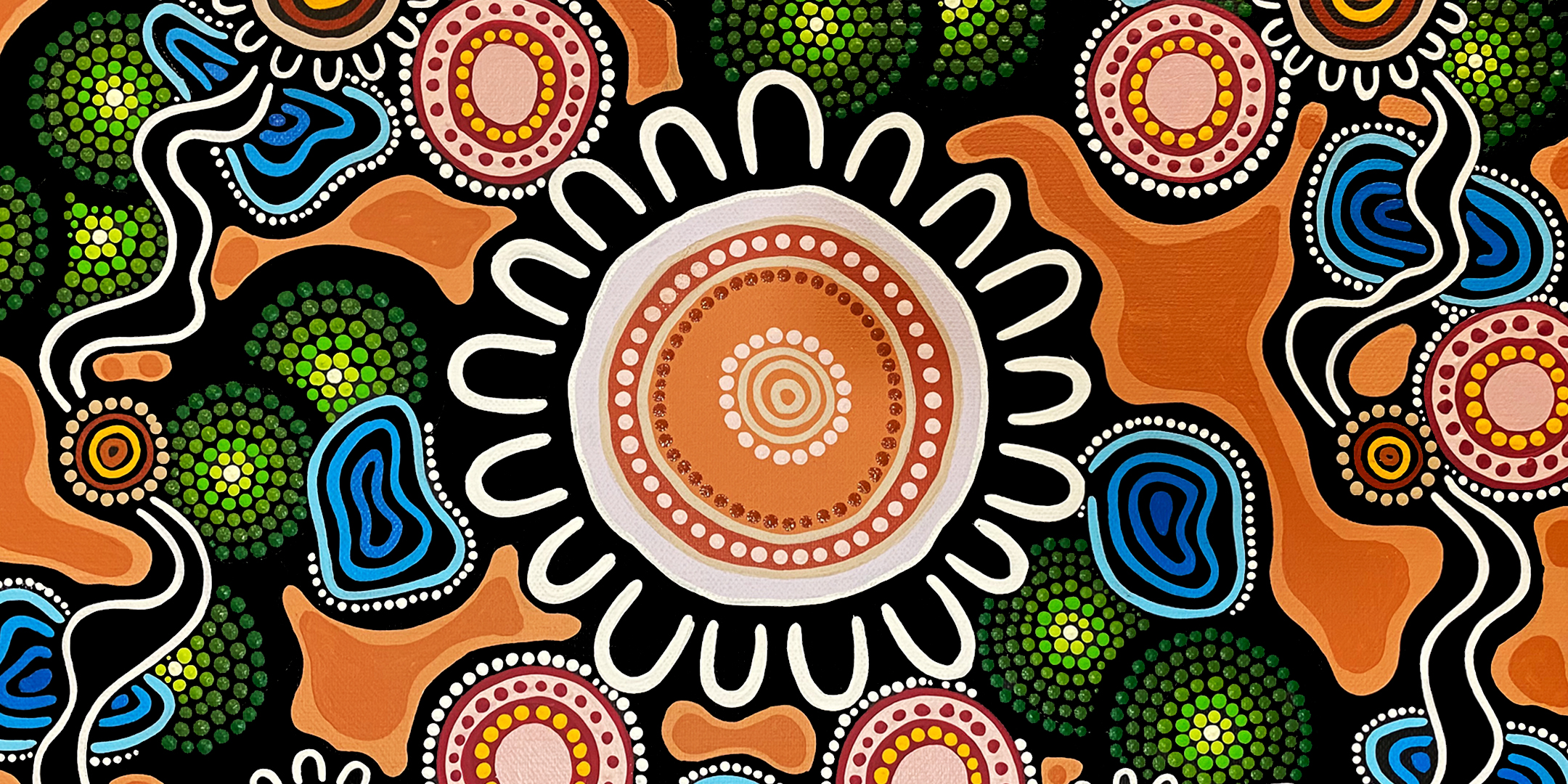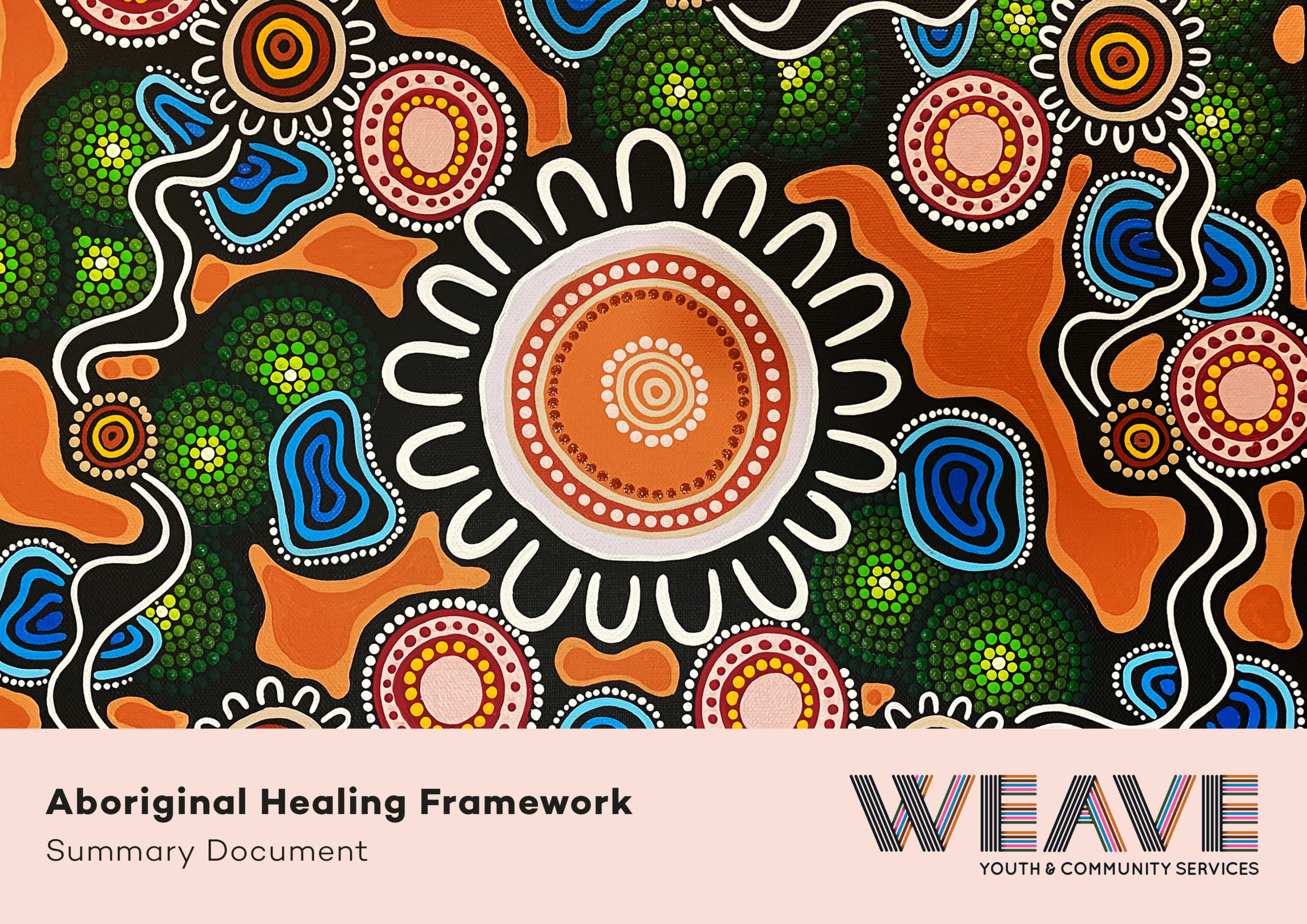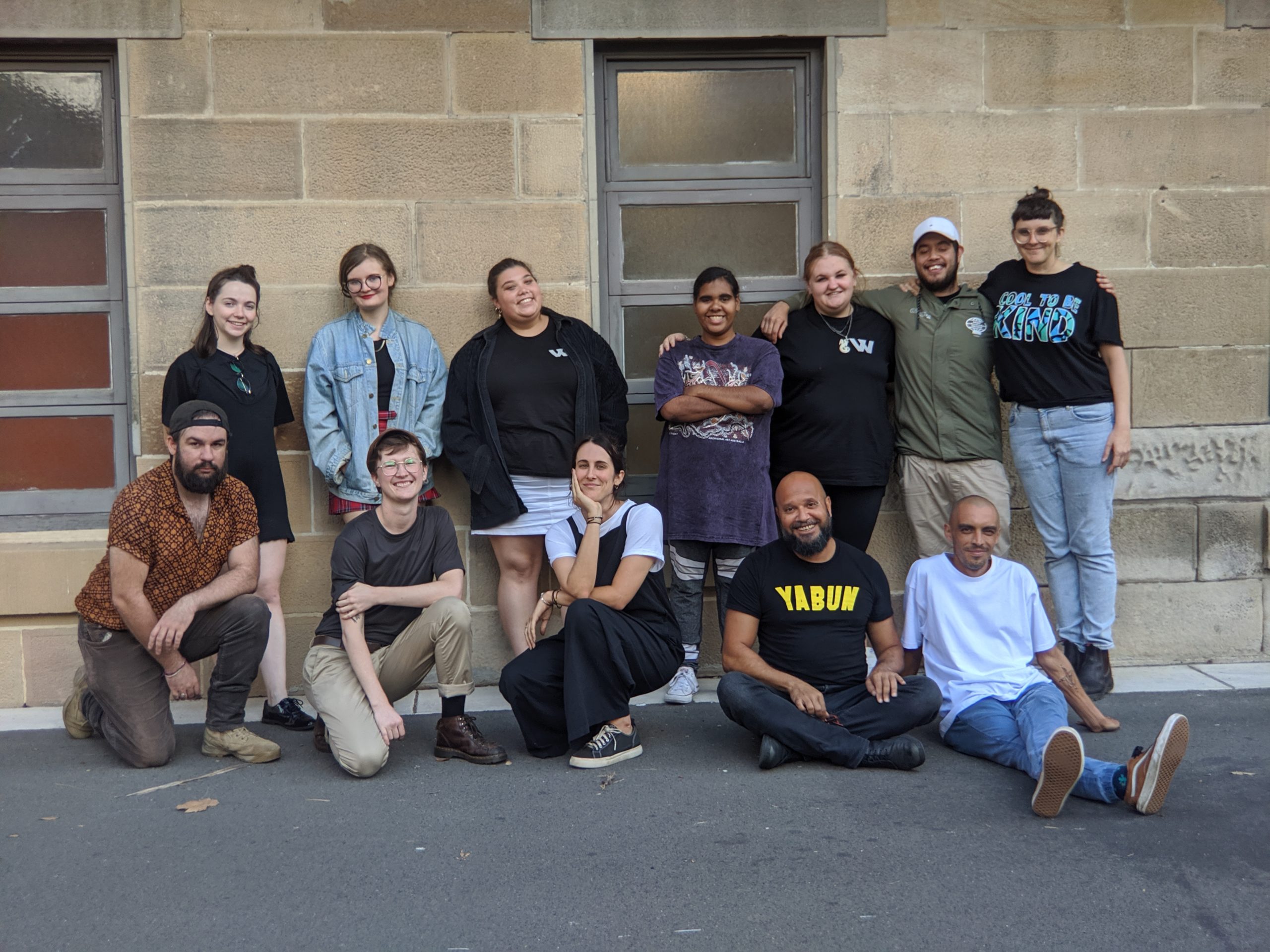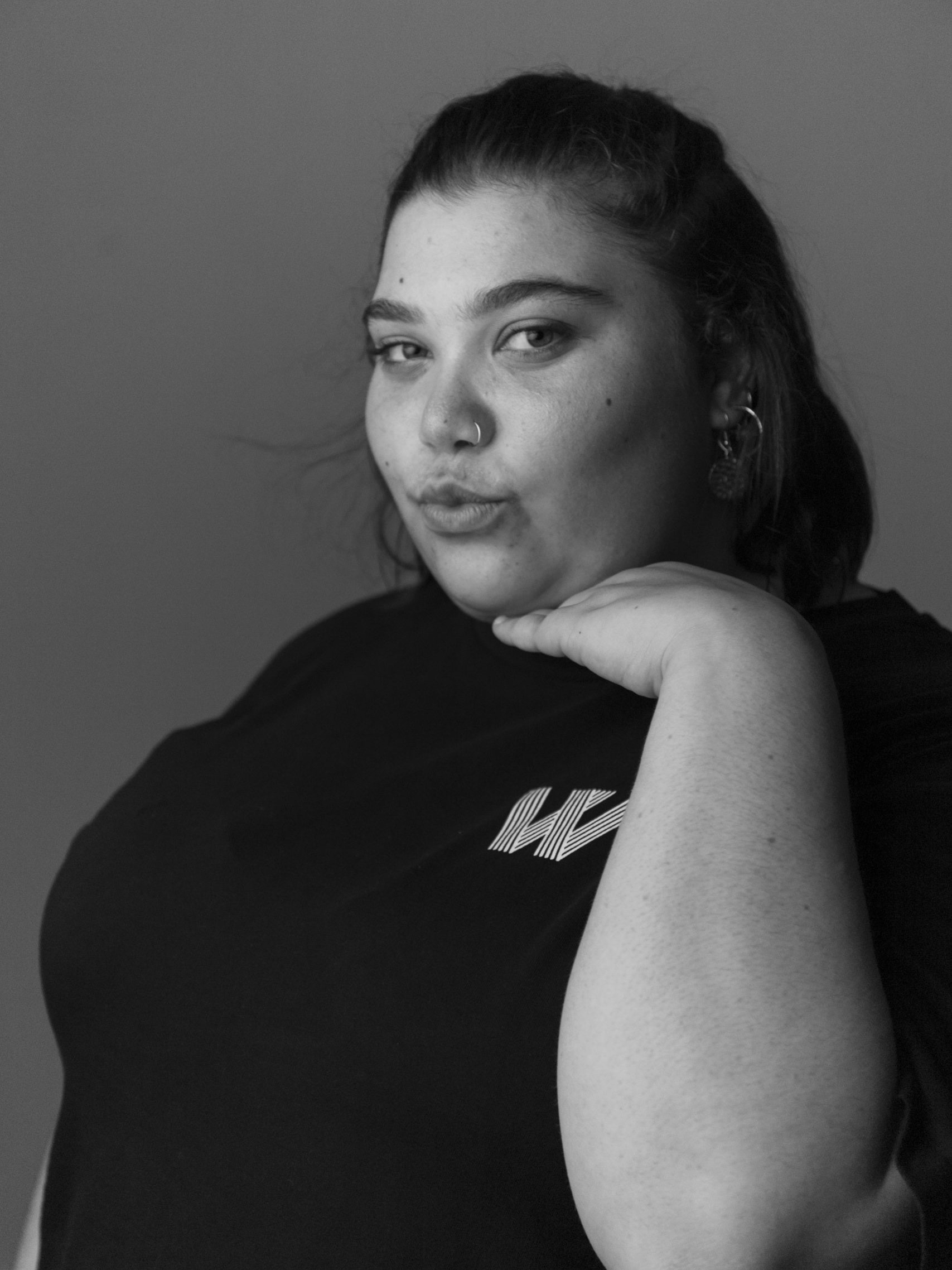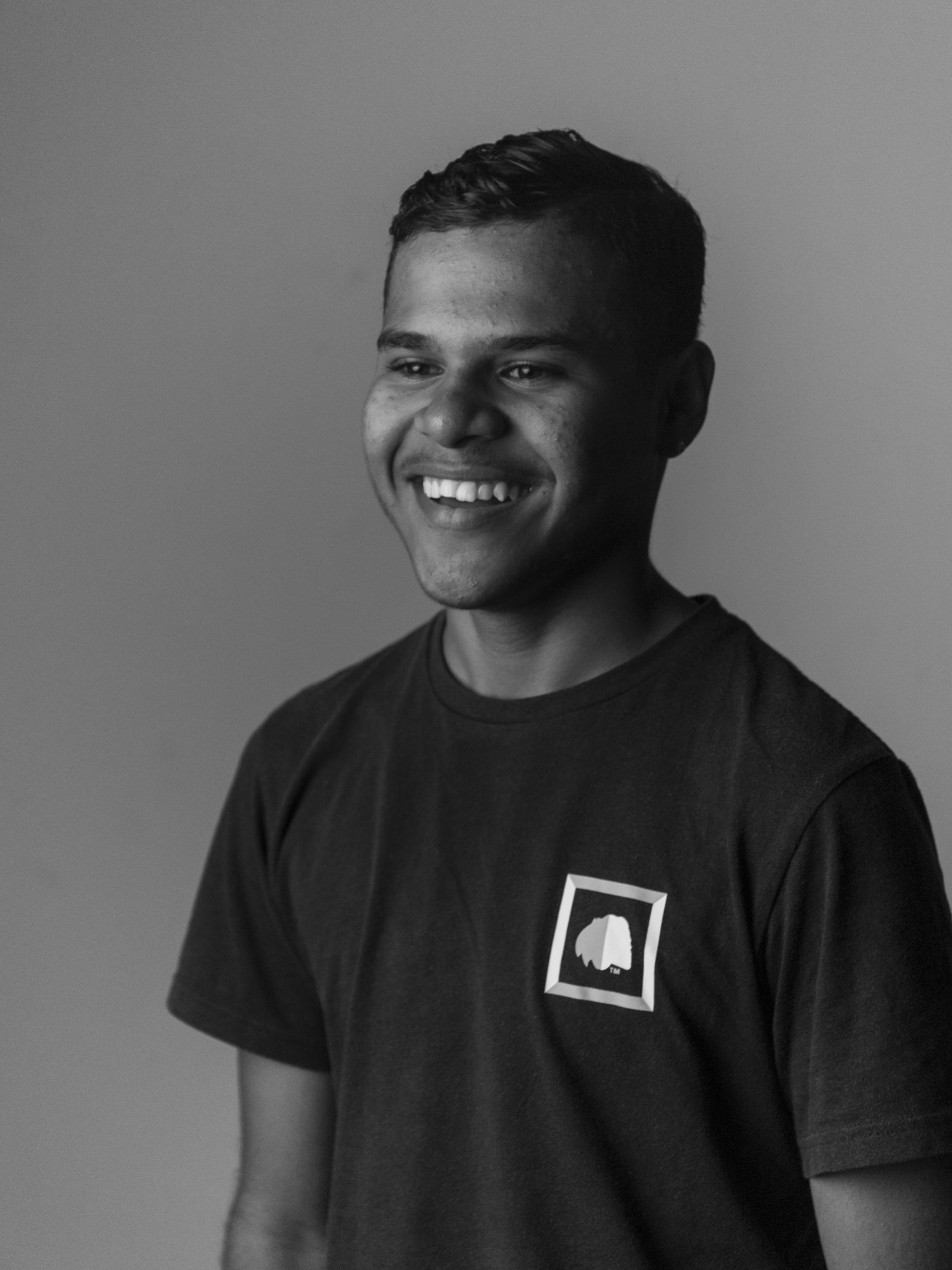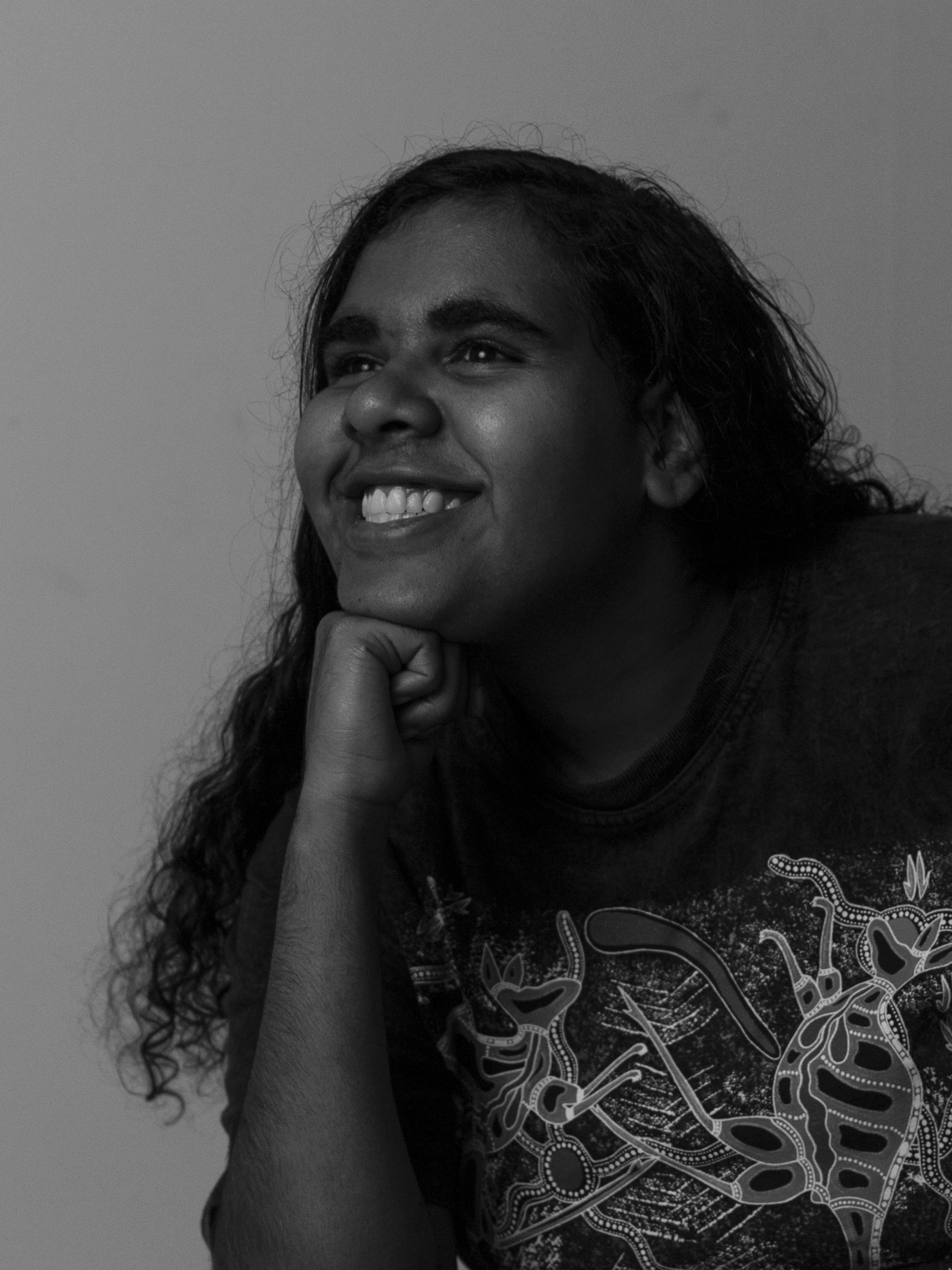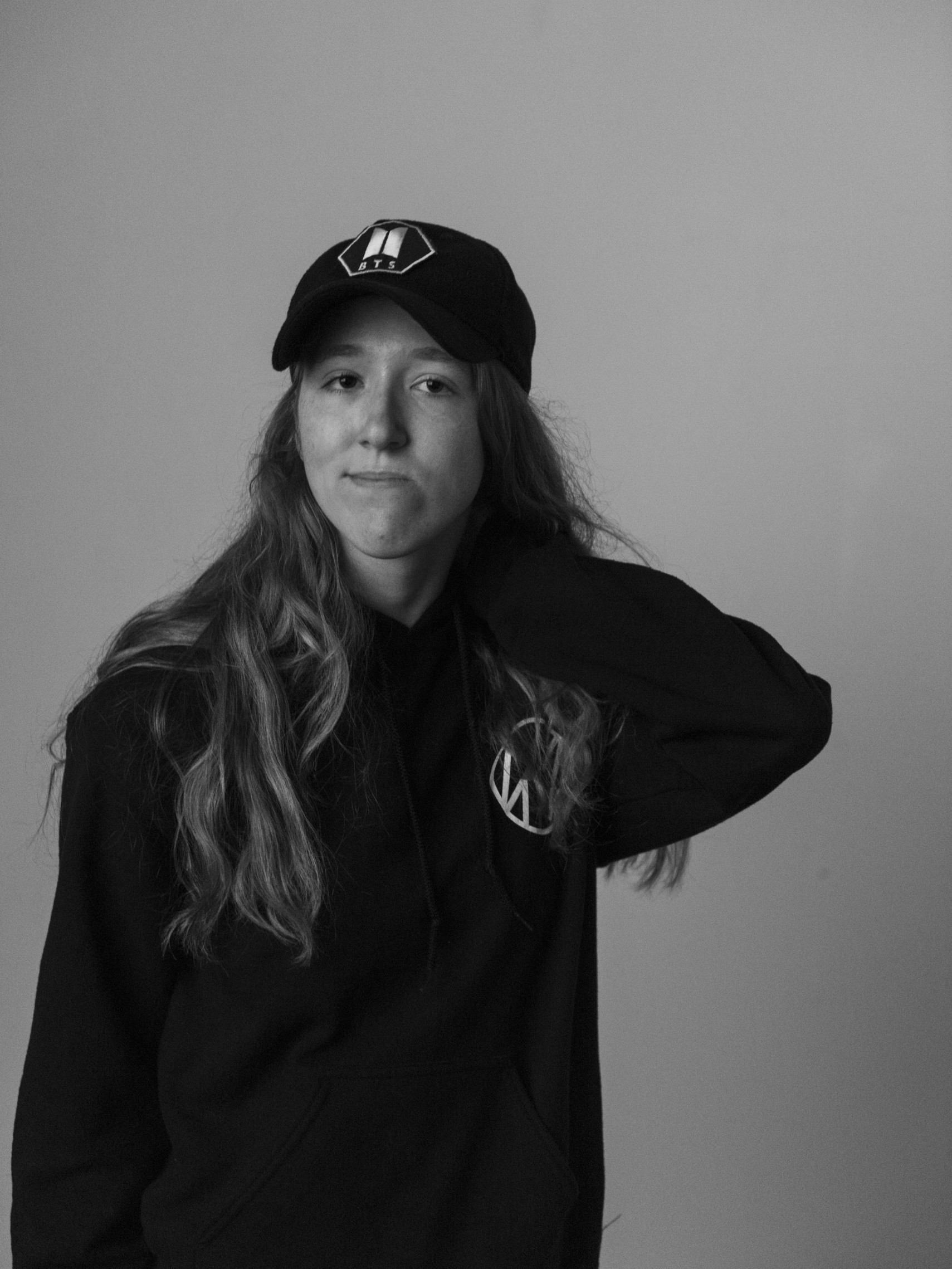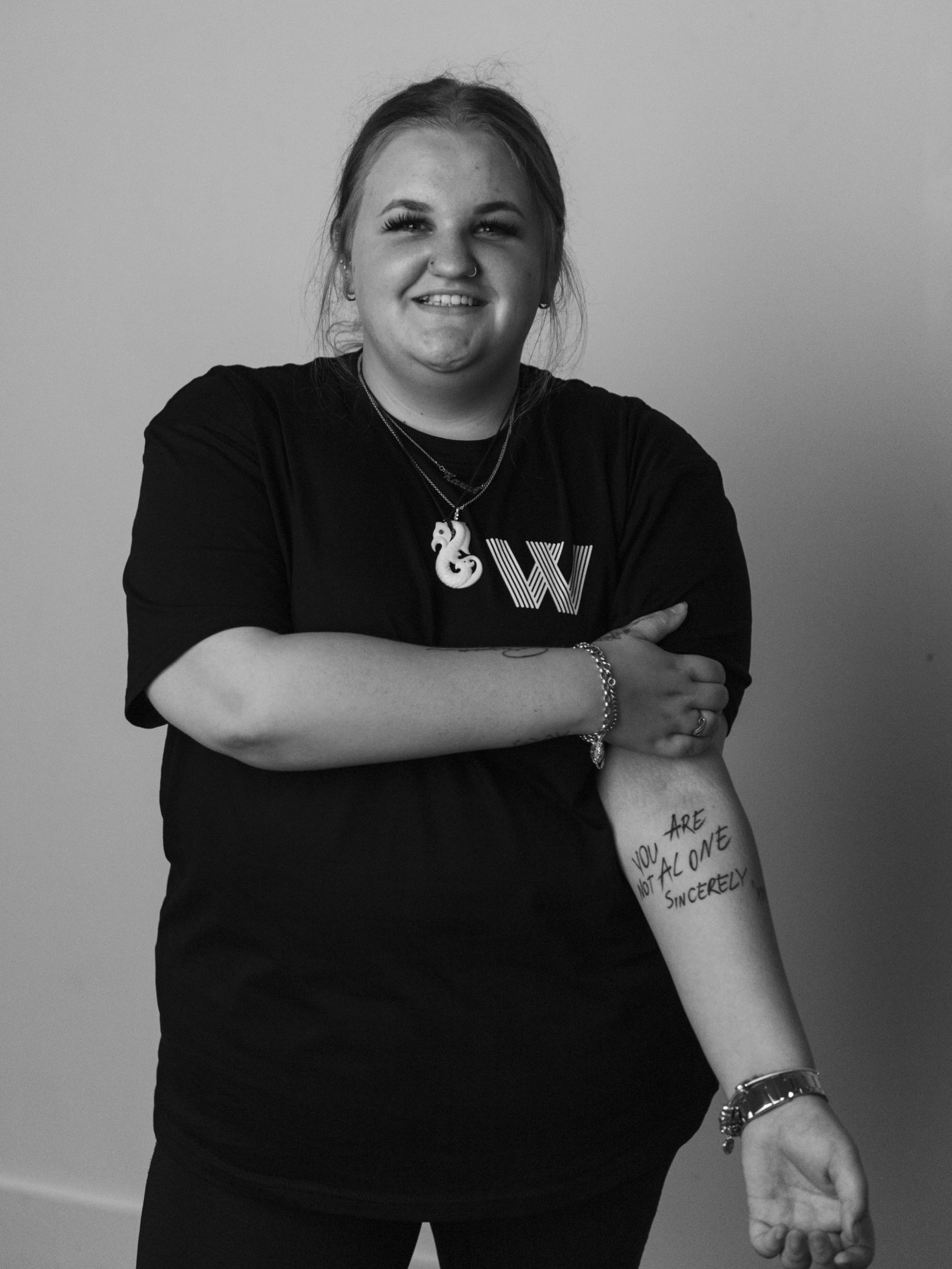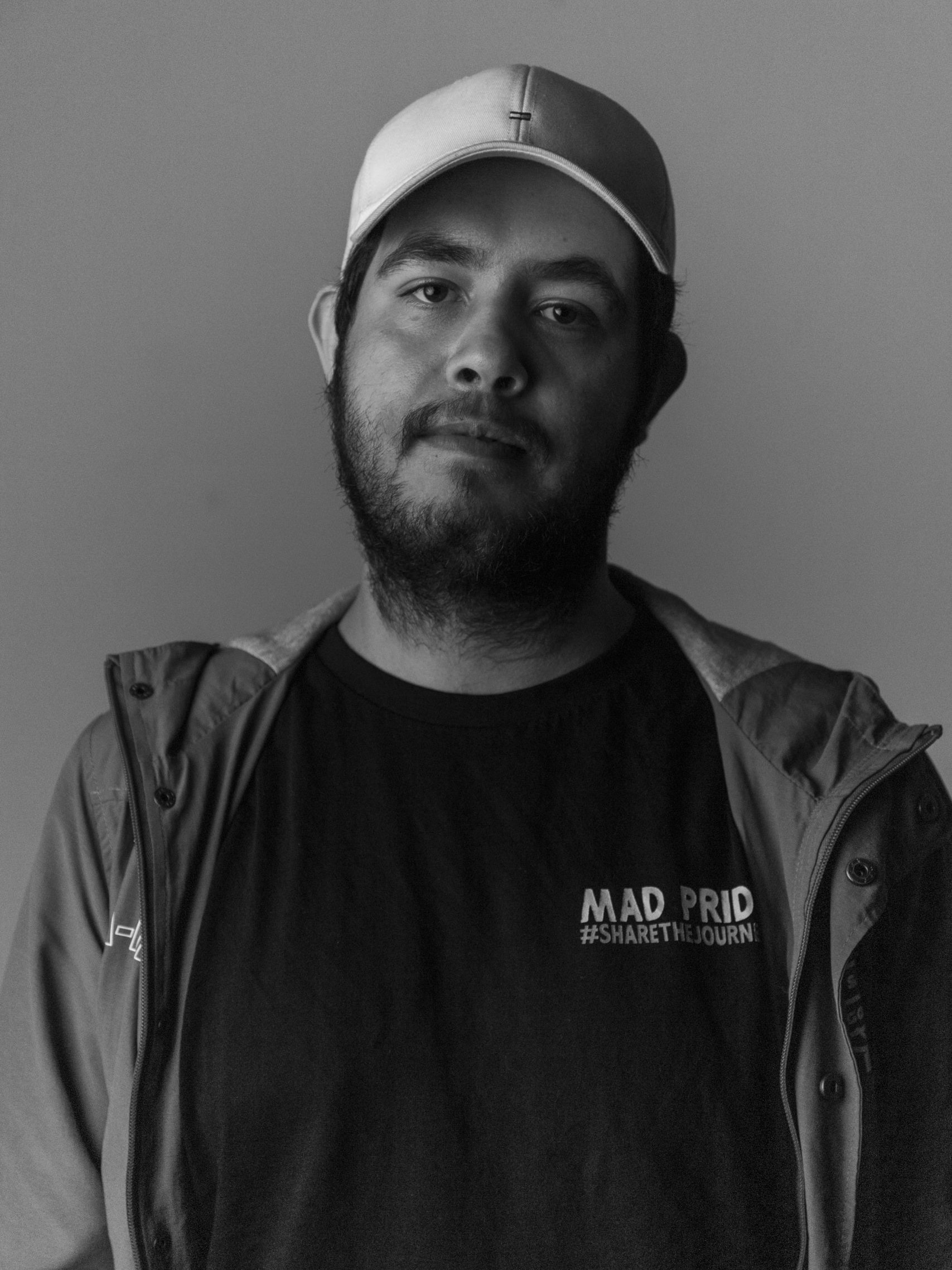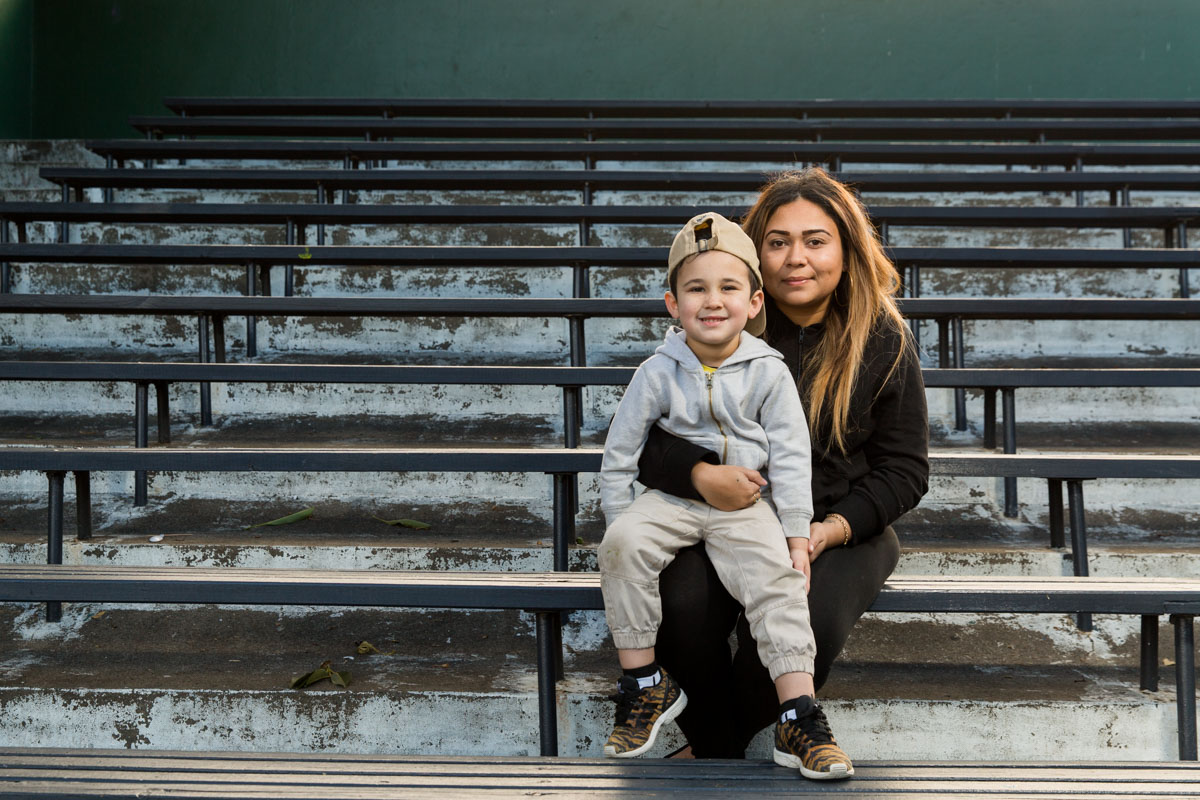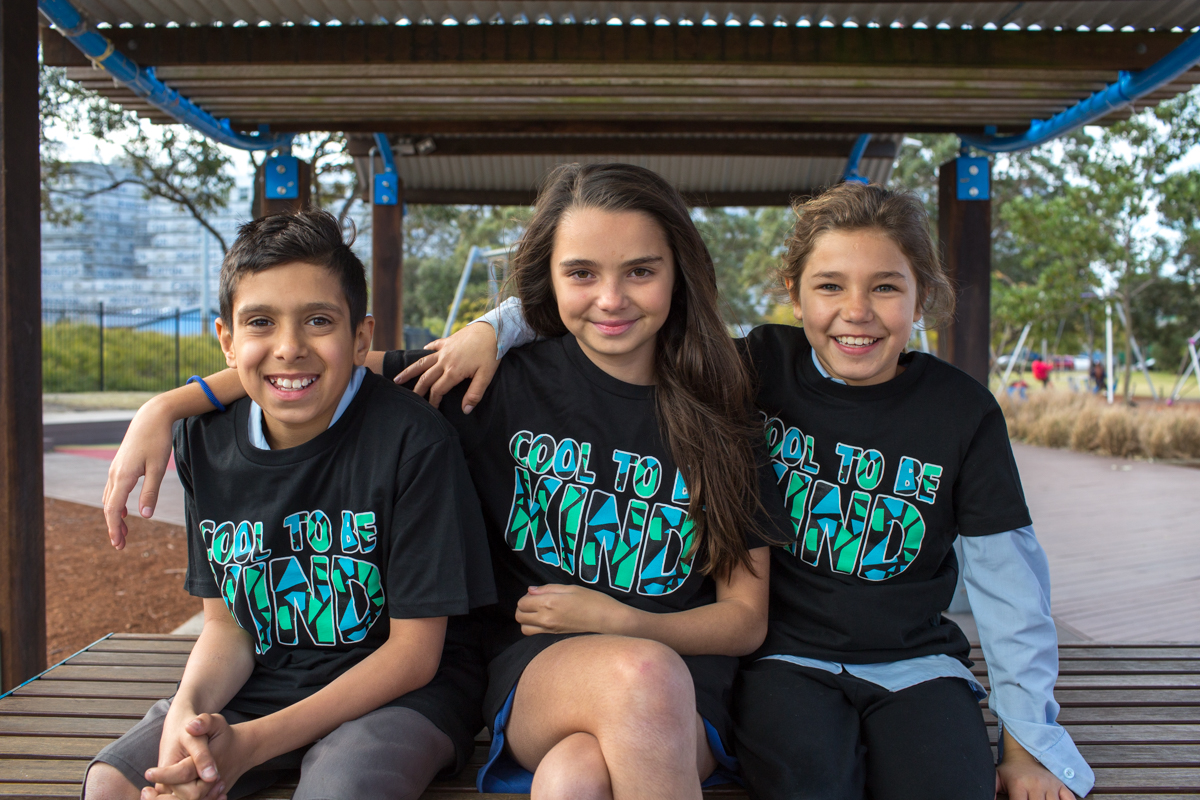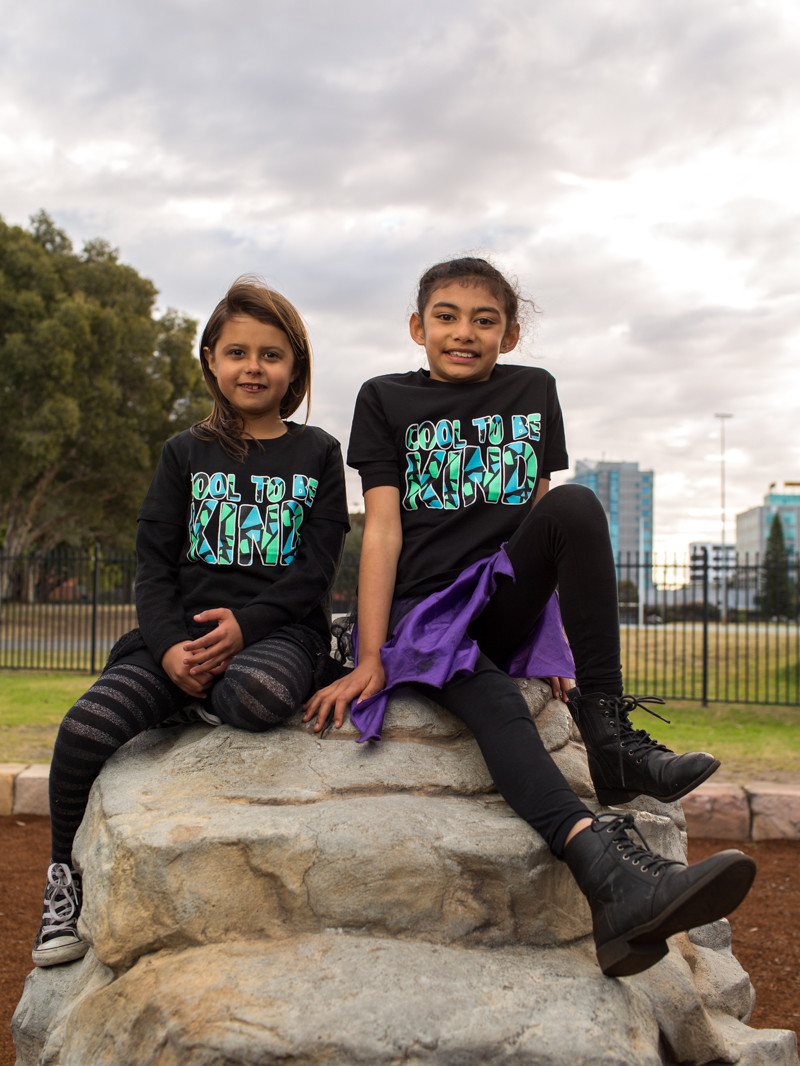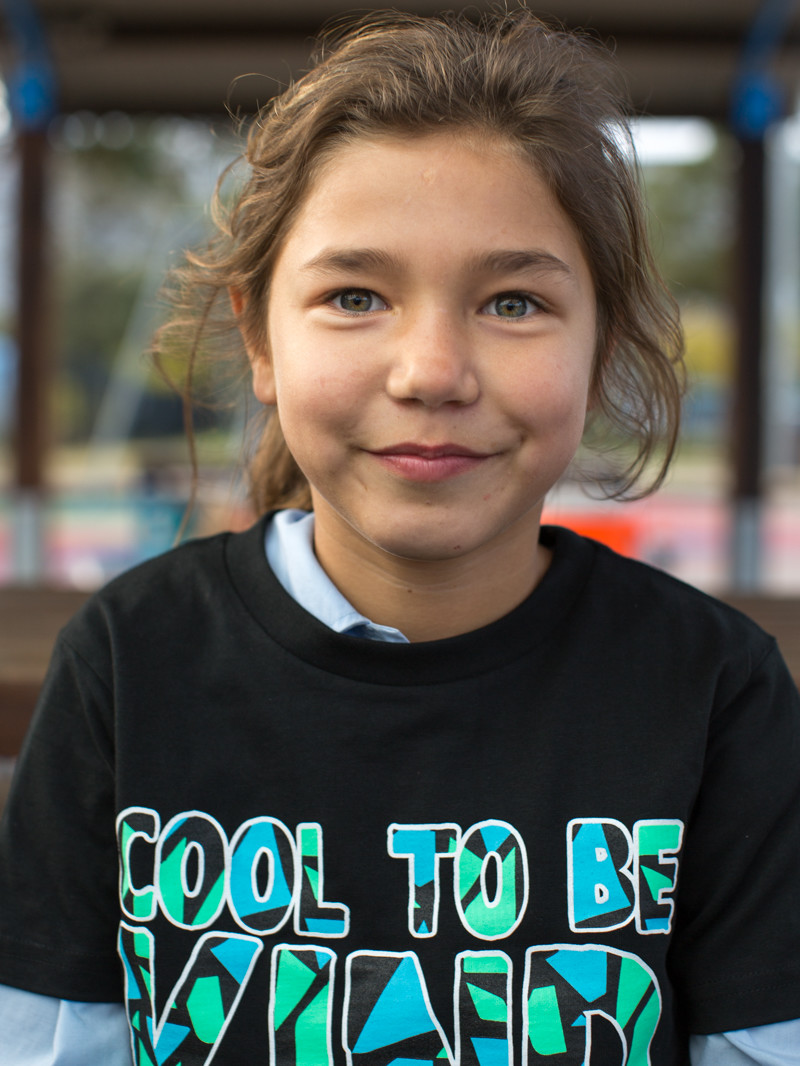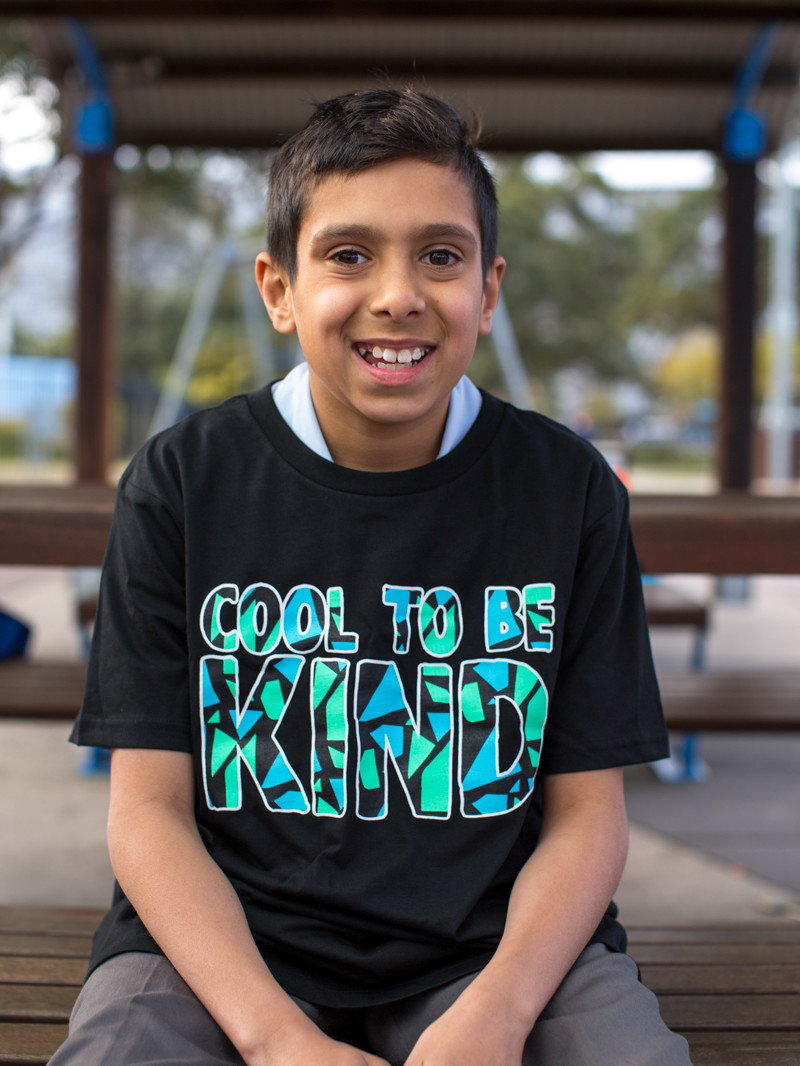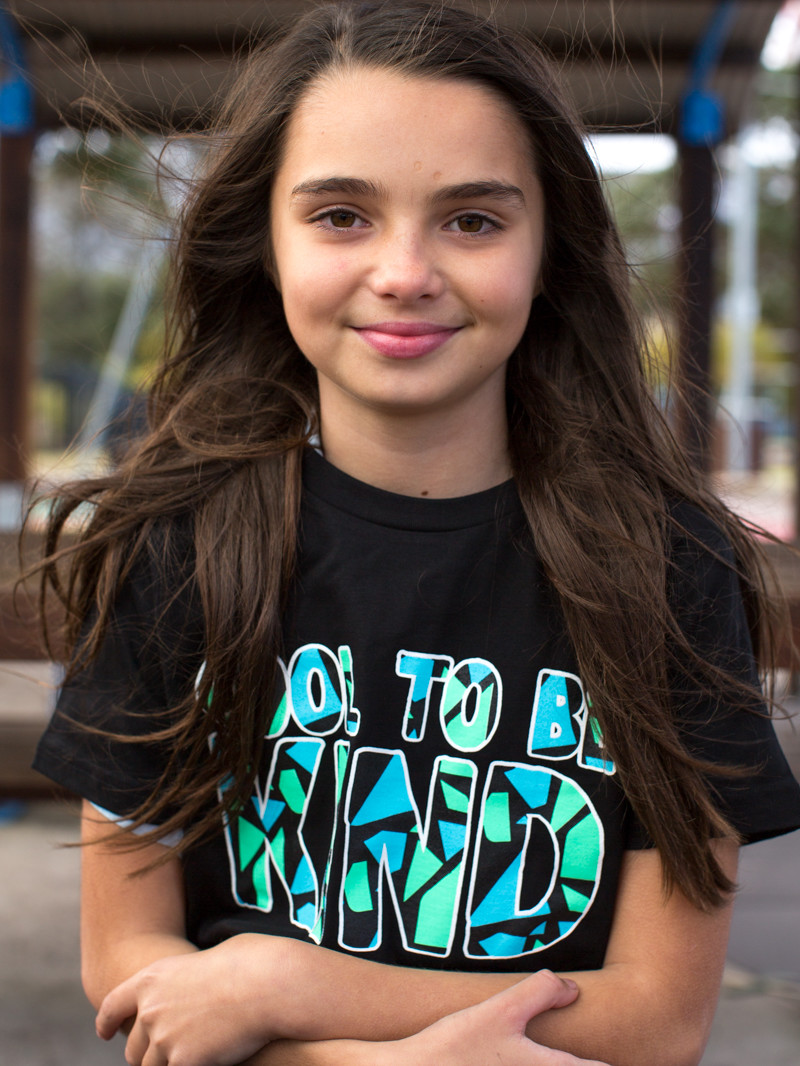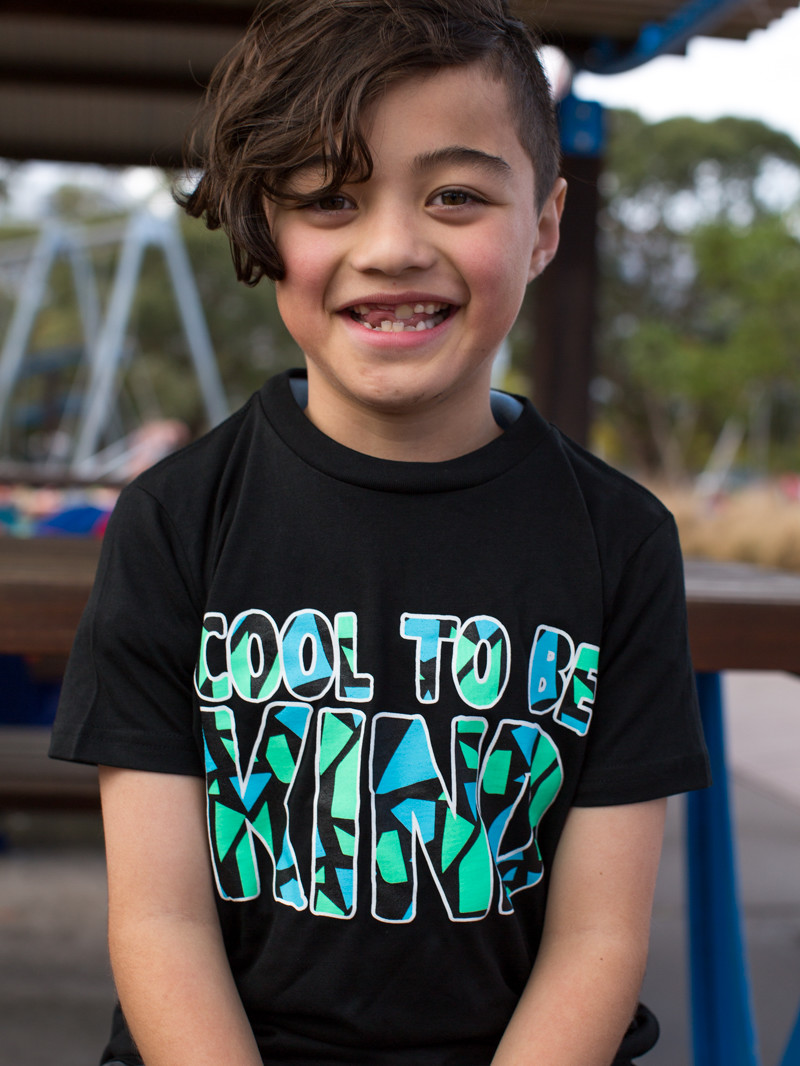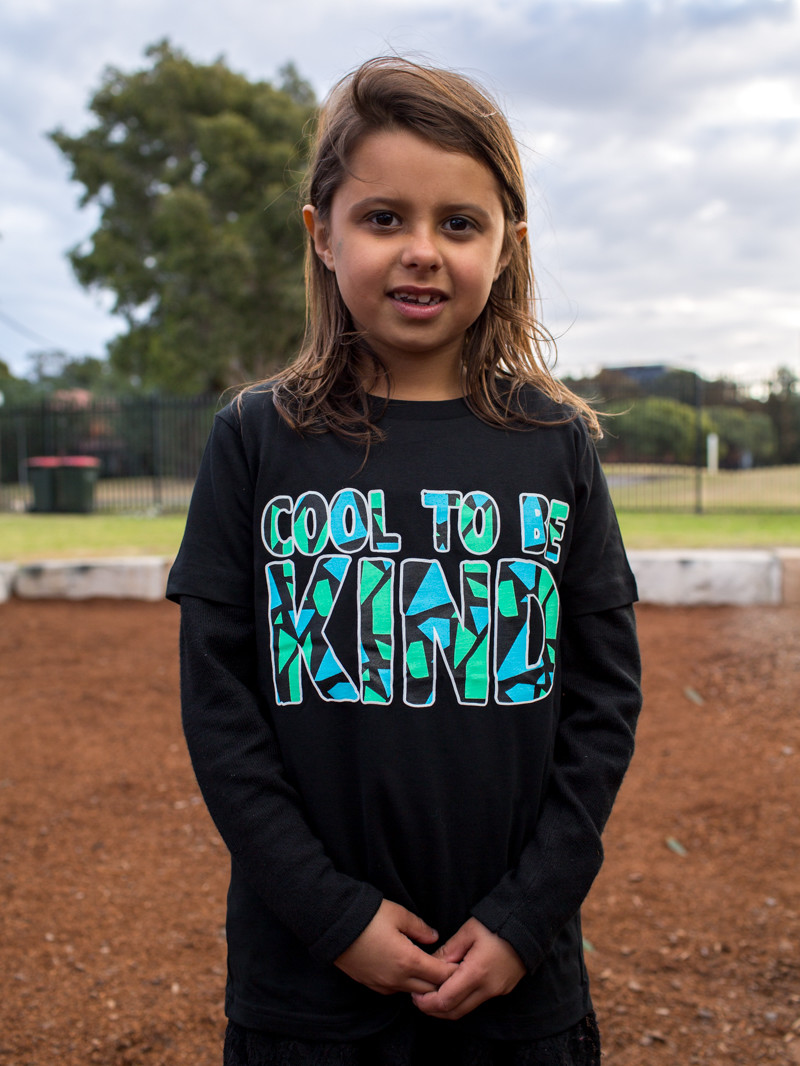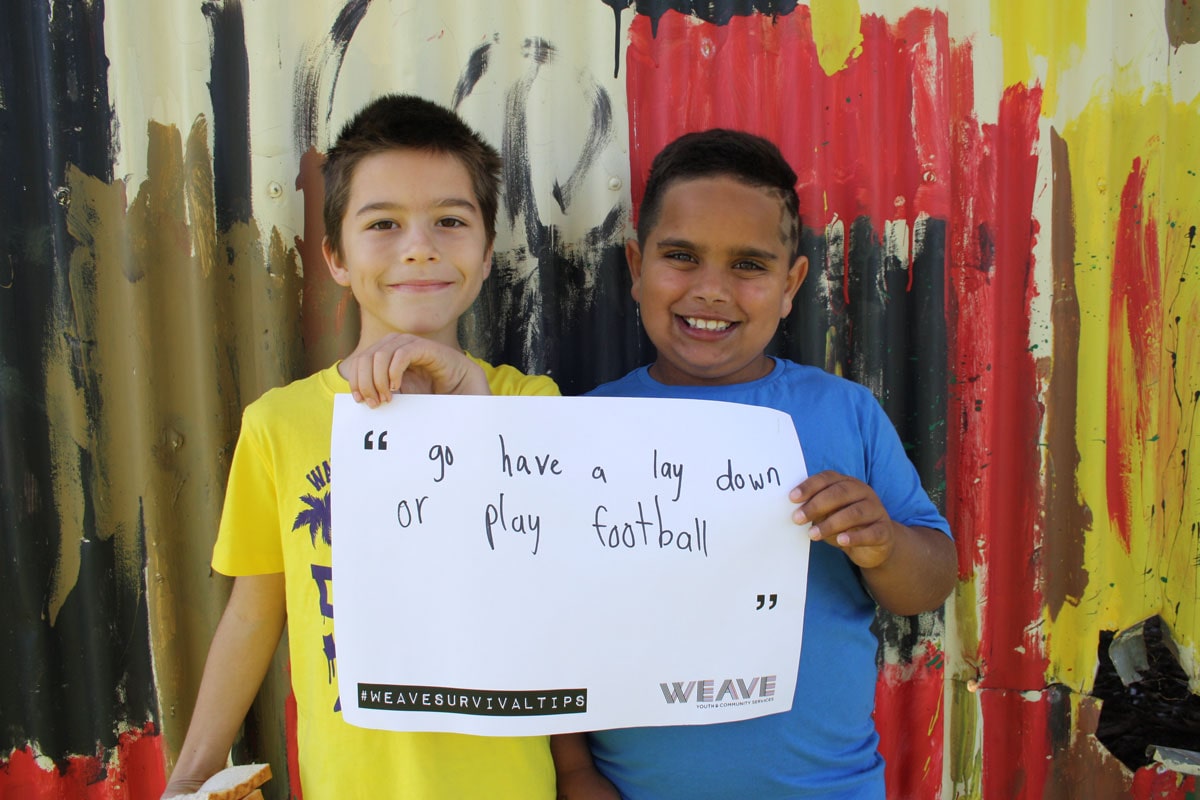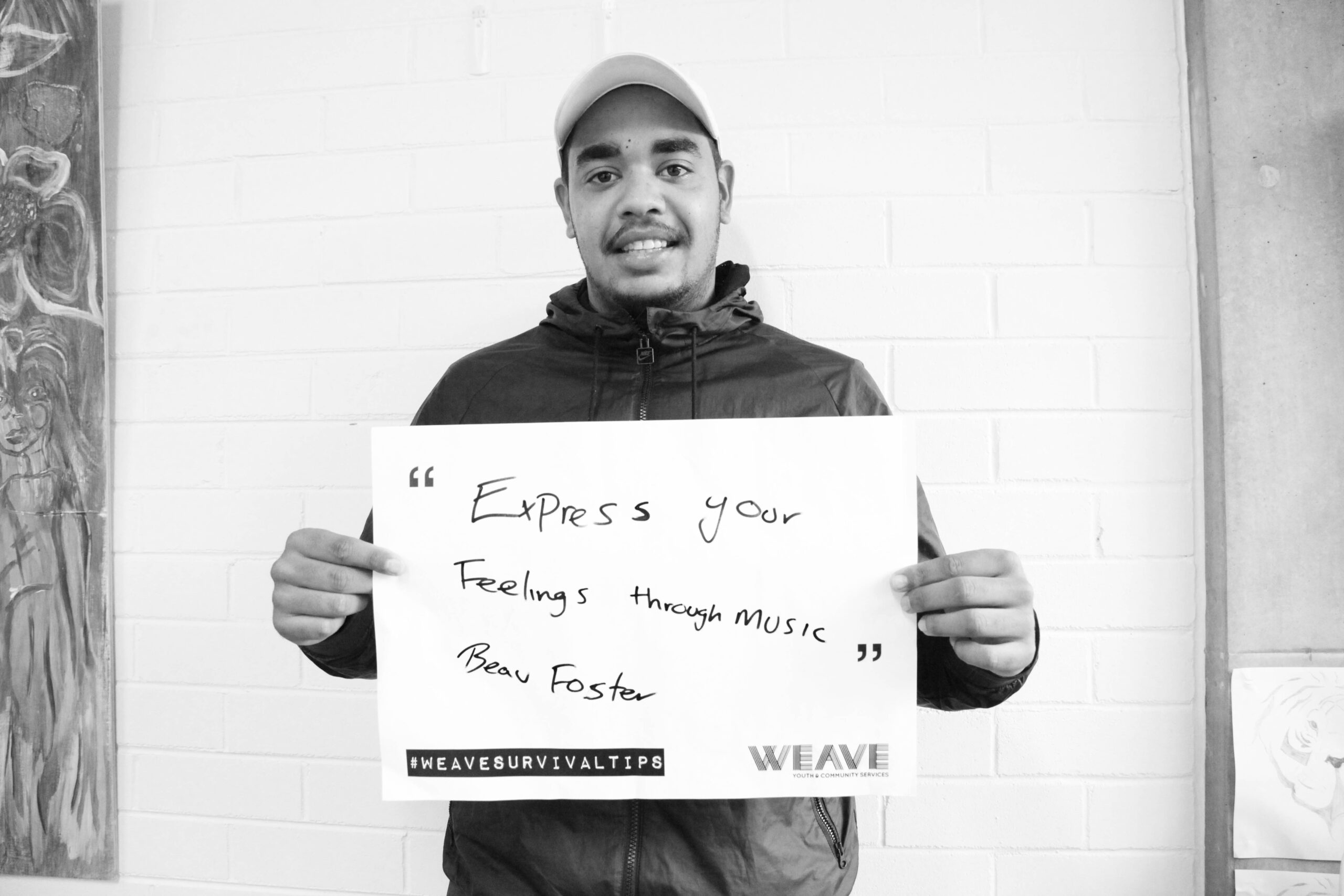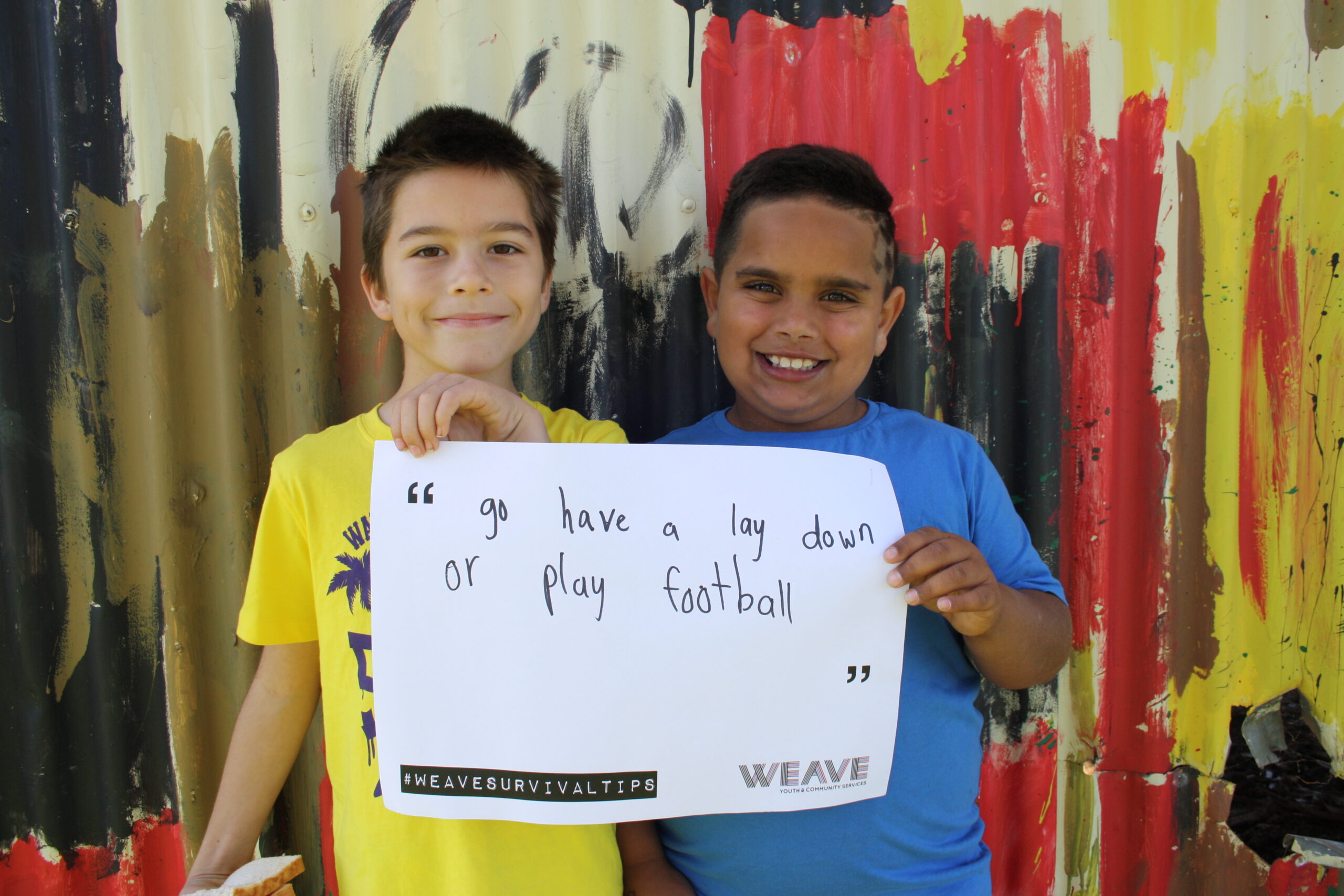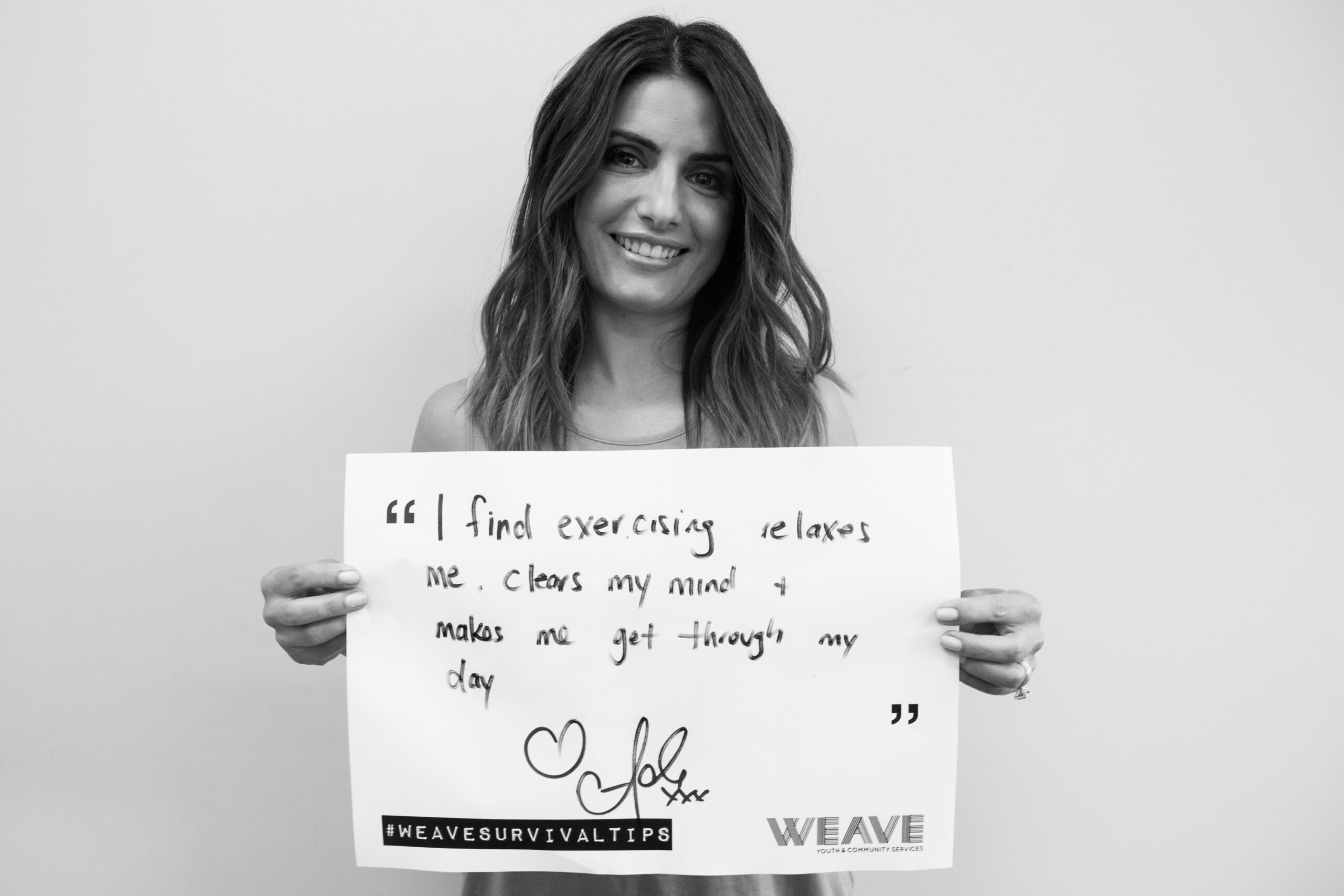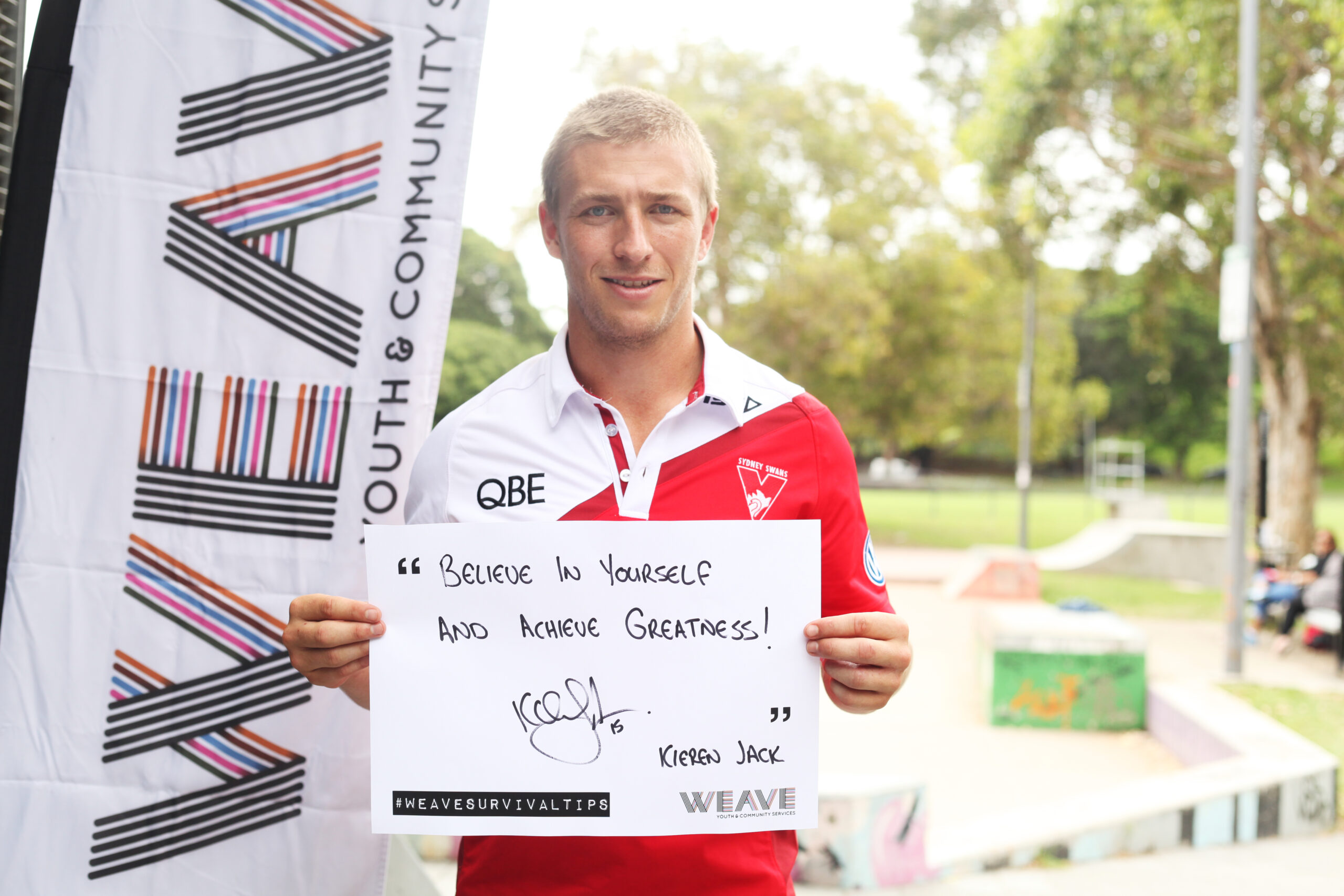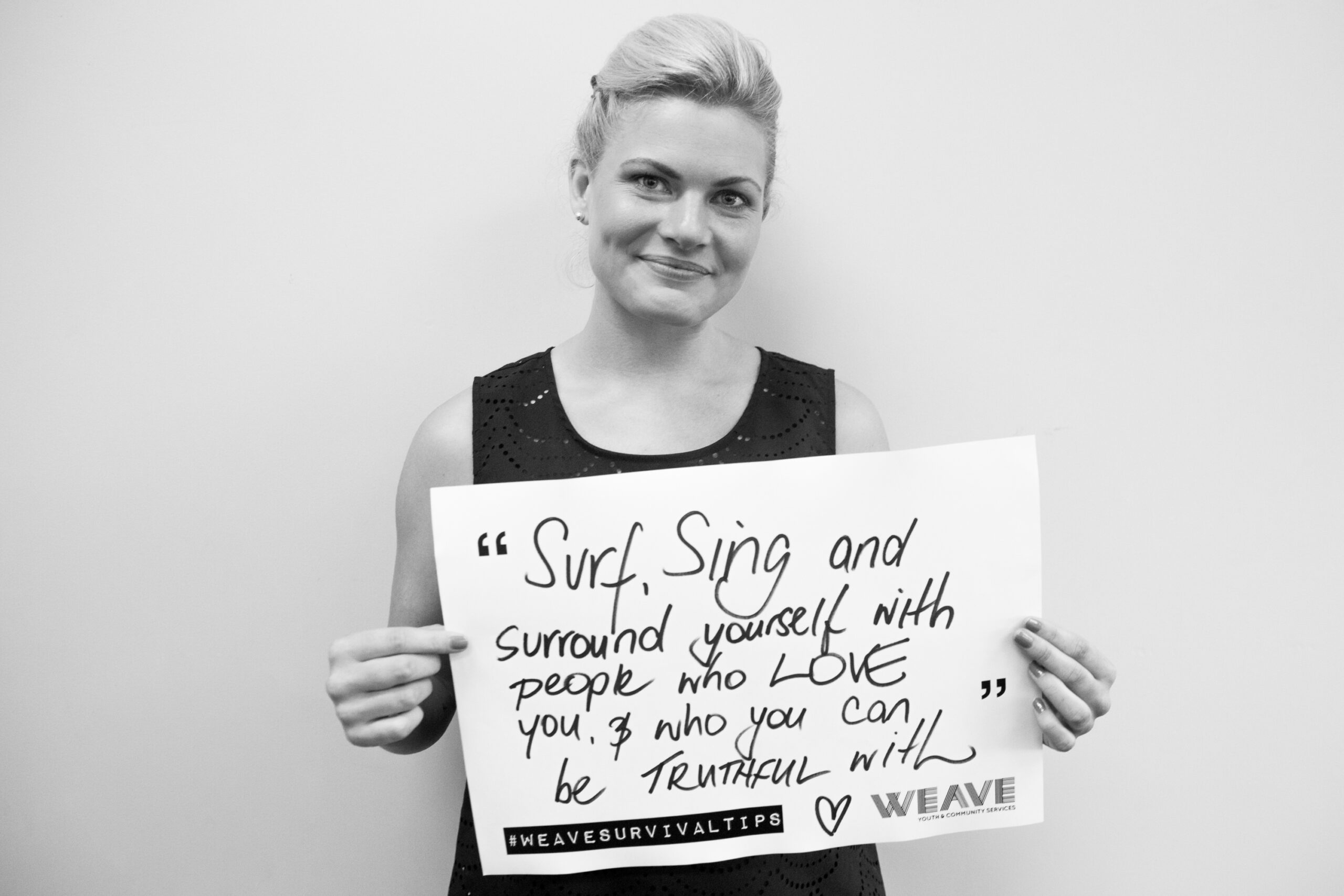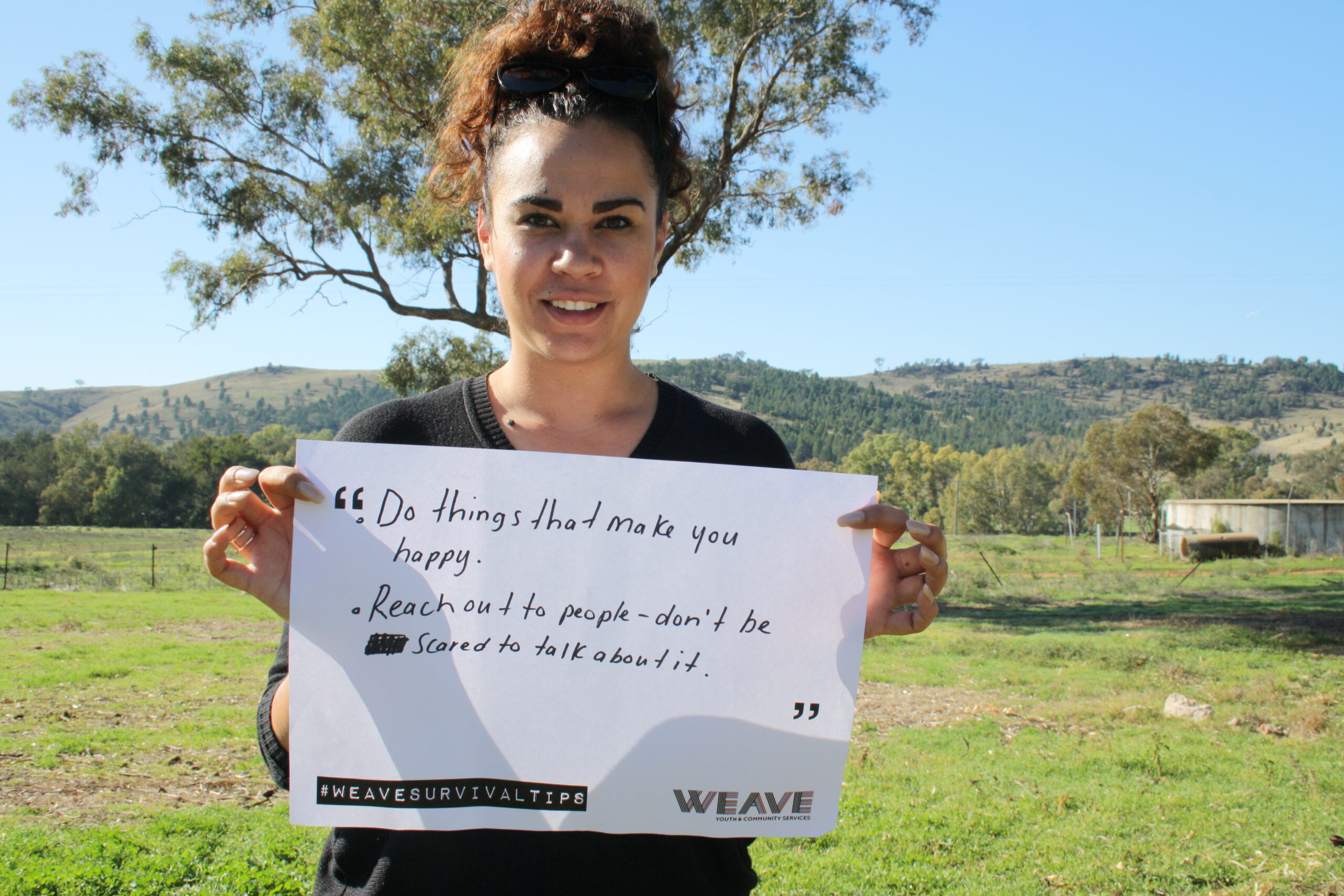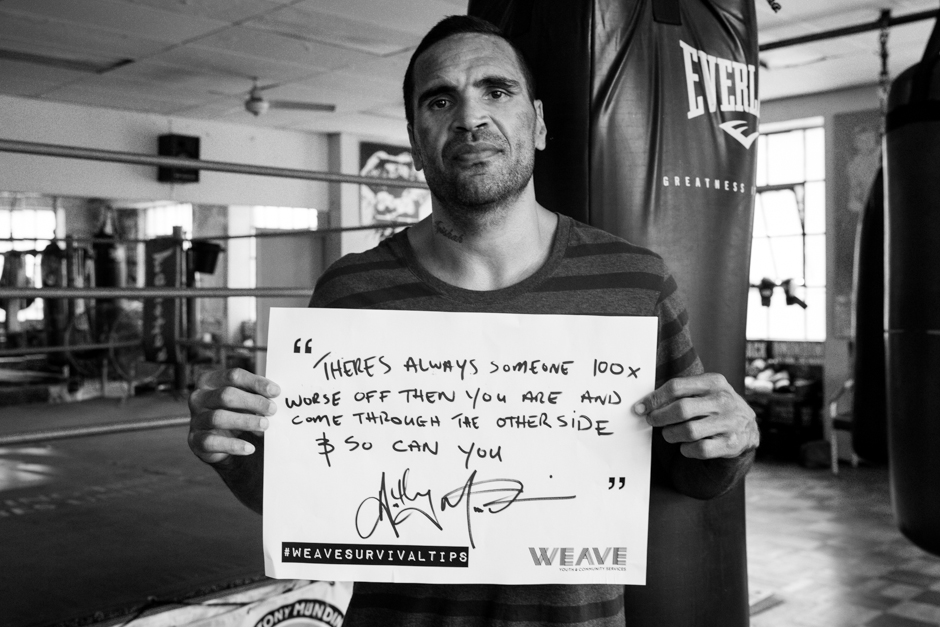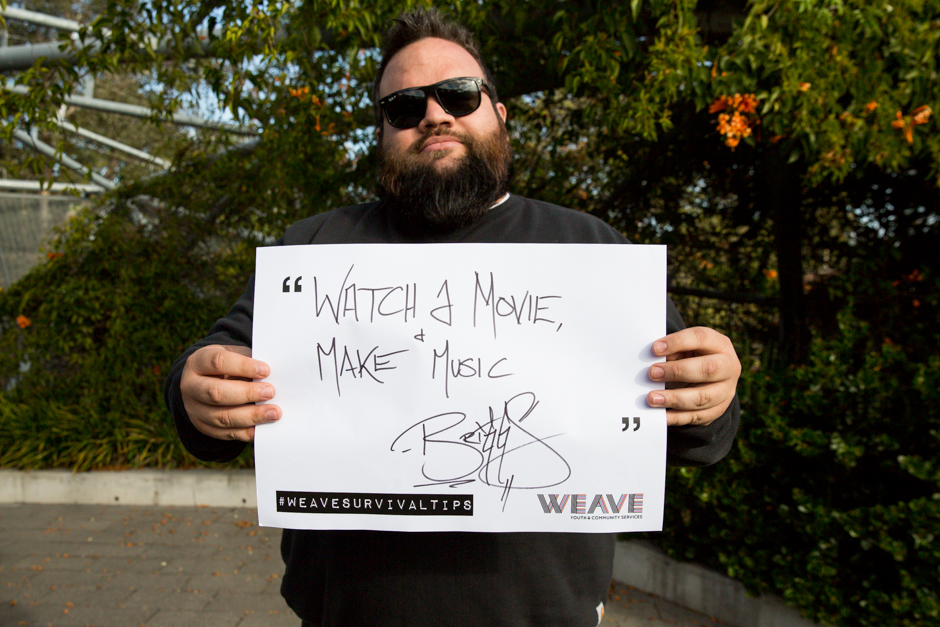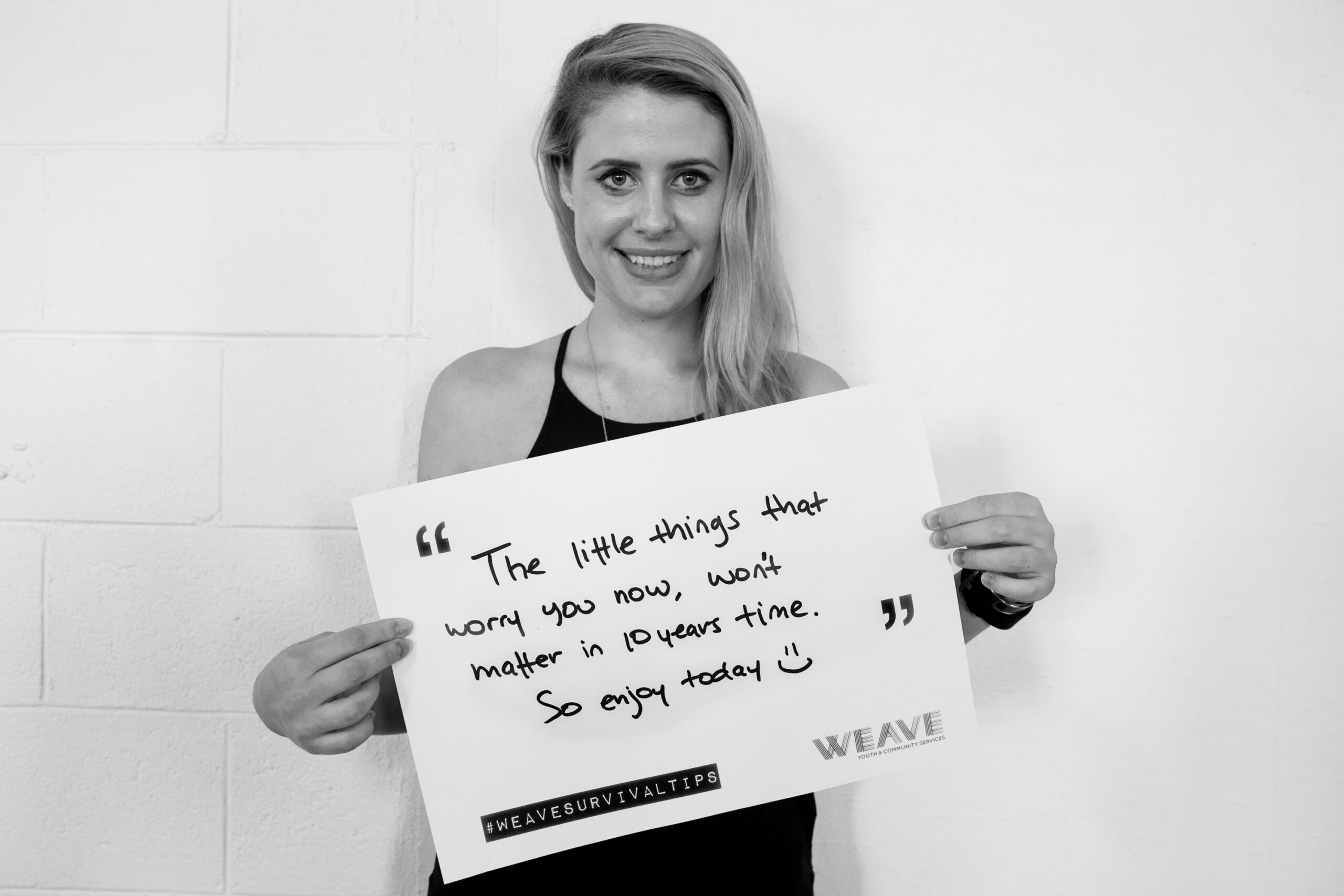Youth Week 2025
Letter from the Makers
Who are Weave’s Youth Advocates?
Weave’s Youth Advocates Group works on projects, campaigns, and events that highlight the voices and perspectives of young people in the community with the support of Weave staff.
100 Self Care Kits
For our Youth Week 2025 Project Weave'S Youth Advocates identified that there might be young people in our community who are not able to attend events in person due to mental health, accessibility, age, and other barriers.
To reach these people and to address isolation we came up with the idea to design 100 self-care kits to be distributed across youth services and refuges in our local community.
Our hope for these boxes is that they allow a sense of community and connection by way of peer support. The activities in them will be stimulating and encouraging of healthy practices.
We are proud to have included arts and craft activities, a daily affirmation and movement journal, packaged food goodies, Aesop skincare, passes to a local pool, a handmade clay bowl supported by Kil.n.it Experimental Ceramics Studio,
a hand drawn sticker sheet, colour in sheets and pencils, a recipe stack, a sensory toy, a pair of fun Jolly Soles socks, Pat and Sticks packet of cookies, a handmade scented candle, and so much more!
We hope you enjoy your boxes!
Here you will find a little more…
Our meditative bush soundscape created by Weave’s Young Women’s Group in 2024 while out on camp at Bamarang Bush Retreat.
Community Services and Support Groups
City of Sydney
Free Events
Libraries
Twenty10
LGBTIQA+ Support
Yellow Ladybugs
Advocacy and support for autistic women and gender diverse individuals.
Clearly Me
Wellbeing app developed by teens for teens.
WAGEC
Women's and Girls' Emergency Centre
Feed the Monster
Australian Aboriginal Interactive Language App
Food Not Bombs Sydney
Free cooked vegan meals served in the Newtown area.
Kaiko Fidgets
Sensory Toys
The Gender Centre
Services and support for the trans and gender diverse community.
Finch
Self Care Pet Game
Smiling Mind
Mental Fitness App
13Yarn
24/7 Crisis Support for Australian First Nations People
Someone.health
Affordable Online Psychology Services
Your Room
Alcohol and Drug Information Resources
Pets in the Park
Veterinary Care for the pets of people experiencing homelessness.
National Debt Helpline
Speak to a Financial Counsellor
Smart Recovery
Substance dependency and problem behaviour support.
Detour House and The Girls Refuge
Safe spaces and support for women experiencing trauma, instability, or substance dependency.
Beyond Blue
24/7 Crisis Support
Lifeline
24/7 Crisis Support
Oasis Youth Services Sydney
Alcohol and Other Drug Counselling for Youth
Public Dental Service
Call 1800 679 336 to contact.
Special Thanks

Be The Change
At Weave we believe we all have a responsibility to create a society where domestic and family violence and abuse is never accepted.
We are committed to continuing to advocate for systemic change and playing our part to end violence against women.
Each year, during the 16 Days of Activism against Gender-Based Violence, we focus on different aspects of domestic and family violence and abuse through our Be The Change Campaign.
Here you will find evidence-based information about the context and drivers of gender-based violence.
Understanding the actions we must take to prevent violence against women can help us all #BeTheChange
Gender-based violence occurs in all communities right across Australia, but violence against women is preventable.
To prevent violence against women we need to understand it.
What is violence against women?
‘Violence against women means any act of gender-based violence that results in, or is likely to result in, physical, sexual or psychological harm or suffering to women, including threats of such acts, coercion or arbitrary deprivation of liberty, whether occurring in public or in private life.”
– United Nations
Violence against women occurs in all cultures, communities and across all demographics including age, gender and socio-economic status and can be:
- physical
- psychological
- sexual
- financial
- spiritual and cultural
- emotional
Violence against women has profound and long-term impacts on women’s physical and mental health and wellbeing, on their children and on families.
What is often not as well recognised or understood is the impact that violence against women has on communities, the economy and on society as a whole. It is because of these significant, widespread individual and social impacts that investment in prevention – the cultural change required to stop this violence from occurring in the first place – is so critical.
What drives violence against women?
International and national research tells us that gender inequality creates the underlying conditions for violence against women to occur.
There is a strong and consistent link between gender inequality and violence against women. Gender inequality is where women and men do not have equal social status, power, resources or opportunities, and their voices, ideas and work are not valued equally by society. It exists at many levels in our society – from how we view and value men and women, to economic factors like the pay gap between men and women, to family and relationship roles and expectations.
The gendered drivers of men’s violence against women are the factors that most consistently predict this violence at a population level, and explain its gendered patterns.
These factors are termed ‘gendered drivers’ because they arise from gender-discriminatory institutional, social and economic structures, social and cultural norms, and organisational, community, family and relationship practices that together create environments in which women and men are not considered equal, and violence against women is both more likely, and more likely to be tolerated and even condoned.
What is intersectionality?
While the gendered drivers of violence arise from the broader social context of gender inequality, they also intersect with other forms of oppression, discrimination and disadvantage, making an intersectional approach to prevention essential.
Many forms of inequality influence the prevalence, dynamics and experiences of violence against women. Gender inequality intersects with other forms of inequality and oppression including:
- Racism
- Ableism
- Ageism
- Heteronormativity
- Cissexism
- Class discrimination
- and – for Aboriginal and Torres Strait Islander women – the ongoing impacts of colonialism.
Intersectionality emerged as a theoretical lens developed from Black feminist theory and activism in the 1960s and 1970s in the United States.
It grew out of the realisation that the feminist movement did not represent the experience of all women and, as bell hooks writes, presented a challenge to the idea that ‘”gender” was the primary factor determining a woman’s fate’.
“Legal scholar Kimberlé Crenshaw wrote about intersectionality as a framework for understanding the ways that different dimensions of identity (specifically race and gender) interact and influence each other and create unique experiences of violence for women of colour.”
- Safe + Equal – Intersectionality in Primary Prevention
The framework of Intersectionality has developed over time as a way to analyse and change the ways that multiple and overlapping experiences of oppression impact individuals and communities.
In the context of violence against women, an intersectional lens allows us to look at how family and gender-based violence occurs in the context of both gender inequality and multiple other forms of structural and systemic inequality, oppression and discrimination.
We believe it is critical to take an intersectional approach to preventing violence against women. We must ensure primary prevention programs, systems and policies recognise and address the multiple forms of oppression and disadvantage that exacerbate the experiences of gender inequality and gender-based violence.
Experiences of Aboriginal and Torres Strait Islander women
Aboriginal and Torres Strait Islander women experience disproportionate rates of violence as a result of intersecting drivers of violence, which include:
- Ongoing impacts of colonisation for Aboriginal and Torres Strait Islander people, families and communities
- Gendered drivers
- Impacts of colonisation on society
Challenging misconceptions about violence against Aboriginal and Torres Strait Islander women
- Violence is not part of traditional Aboriginal or Torres Strait Islander cultures
- Violence against Aboriginal and Torres Strait Islander women is perpetrated by Indigenous and non-Indigenous men
- Alcohol is a contributing factor, and often a trigger for violence, but it is not the ‘cause’
Ongoing impacts of colonisation for Aboriginal and Torres Strait Islander people, families and communities
- Intergenerational and collective trauma
- Systemic oppression
- Disempowerment
- Racism
- Destruction/disruption of traditional cultures family and community relationships and community norms about violence
- Personal experience of/exposure to violence
- Condoning of violence within Aboriginal and Torres Strait Islander communities
Gendered drivers
- Men’s control of decision making and limits to women’s independence
- Stereotyped constructions of masculinity and femininity
- Disrespect towards women and male peer relations that emphasise aggression
- Additional gendered drivers of violence against Aboriginal and Torres Strait Islander women
- Intersection of racism and sexism
- Impacts of colonial patriarchy on Aboriginal and Torres Strait Islander cultures, gender roles, men, women and relationships
Impacts of colonisation on society:
- Racialised structural inequalities of power
- Entrenched racism in social norms, attitudes and practices
- Perpetration of racist violence
- Condoning of, and insufficient accountability for, violence against Aboriginal and Torres Strait Islander people
Our Watch’s ‘Changing the picture’ Framework discusses the many complex factors that make up each driver and the interactions between them in more detail.
Aboriginal and Torres Strait Islander women experience violence that is often more severe and more complex in its impacts.
The probability of violence against women is higher when the consequences of gender inequality intersect with the impact of other forms of inequality and discrimination such as racism, colonisation and dispossession.
Challenging racism and addressing the ongoing impacts of colonisation is critical to ending violence against Aboriginal and Torres Strait Islander women.
Essential prevention actions
The intersection between these multiple drivers results in Aboriginal and Torres Strait Islander women experiencing disproportionate levels of violence, with particularly severe and complex impacts. Responding to current extreme levels of violence against Aboriginal and Torres Strait Islander women is critical. But to prevent this violence from happening in the first place, we need actions that directly address its three underlying drivers.
Address the legacies and ongoing impacts of colonisation for Aboriginal and Torres Strait Islander people, families and communities
- Heal the impacts of intergenerational trauma, strengthening culture,identity and self-determination
- Strengthen and support Aboriginal and Torres Strait Islander families
- Implement specific initiatives for Aboriginal and Torres Strait Islander women and girls, boys and men, and children and young people
- Challenge the condoning of violence in Aboriginal and Torres Strait Islander communities
- Increase access to justice for Aboriginal and Torres Strait Islander people
Address the legacies and ongoing impacts of colonisation for non-Indigenous people, and across Australian society
- Challenge and prevent all forms of racism, indifference, ignorance and disrespect towards Aboriginal and Torres Strait Islander people and cultures
- Address racialised power inequalities and amend discriminatory policies and practices
- Challenge the condoning of violence against Aboriginal and Torres Strait Islander people
Address the gendered drivers of violence against Aboriginal and Torres Strait Islander women
- Implement intersectional approaches to preventing violence against women across the Australian population
- Challenge the condoning of violence against Aboriginal and Torres Strait Islander women by challenging both racist and sexist attitudes and social norms
- Support Aboriginal and Torres Strait Islander women’s participation in leadership and decision making
- Challenge gender stereotypes, and the impacts of colonisation on men’s and women’s roles, relationships and identities
- Strengthen positive, equal and respectful relationships between women and men, girls and boys
- Engage both Indigenous and non-Indigenous men to challenge harmful and violence-supportive ideas about masculinity and relationships
Sources
Our Watch
Change the story. A shared framework for the primary prevention of violence against women in Australia (second edition).
Our Watch
Change the picture. A national resource to support the prevention of violence against Aboriginal and Torres Strait Islander women and their children.
Safe + Equal
Intersectionality in Primary Prevention
Safe + Equal
What Causes Family Violence
Always Was, Always Will Be
Weave always has and always will stand on Aboriginal land alongside our Aboriginal communities.
Weave Youth & Community Services stands on the land of the Gadigal and Bidjigal people. Over our 45 year history, numerous Aboriginal community members, clients, staff and Board Members have guided our work as an organisation and taught us how to walk alongside them. We honour the resilience and strength of First Nations people and recognise their ongoing fight for self-determination.
As a non-Aboriginal controlled organisation we are committed to standing alongside our Aboriginal staff, clients and communities in their ongoing fight against systemic oppression and injustice. We recognise our role in supporting this fight, through supporting our Aboriginal and Torres Strait Islander clients and communities in their individual and collective healing journeys.
‘Always Was, Always Will Be’ is a short film produced by Weave in partnership with local grassroots organisations Tribal Warrior and Redfern Aboriginal Medical Service. The film was produced alongside Weave’s Aboriginal staff, and features clients and community members who share stories of connection to land and place on Gadigal and Bidjigal land.
Aboriginal and Torres Strait Islander viewers please be advised this video may contain footage of people who have passed away.
Film by Benny Edwards
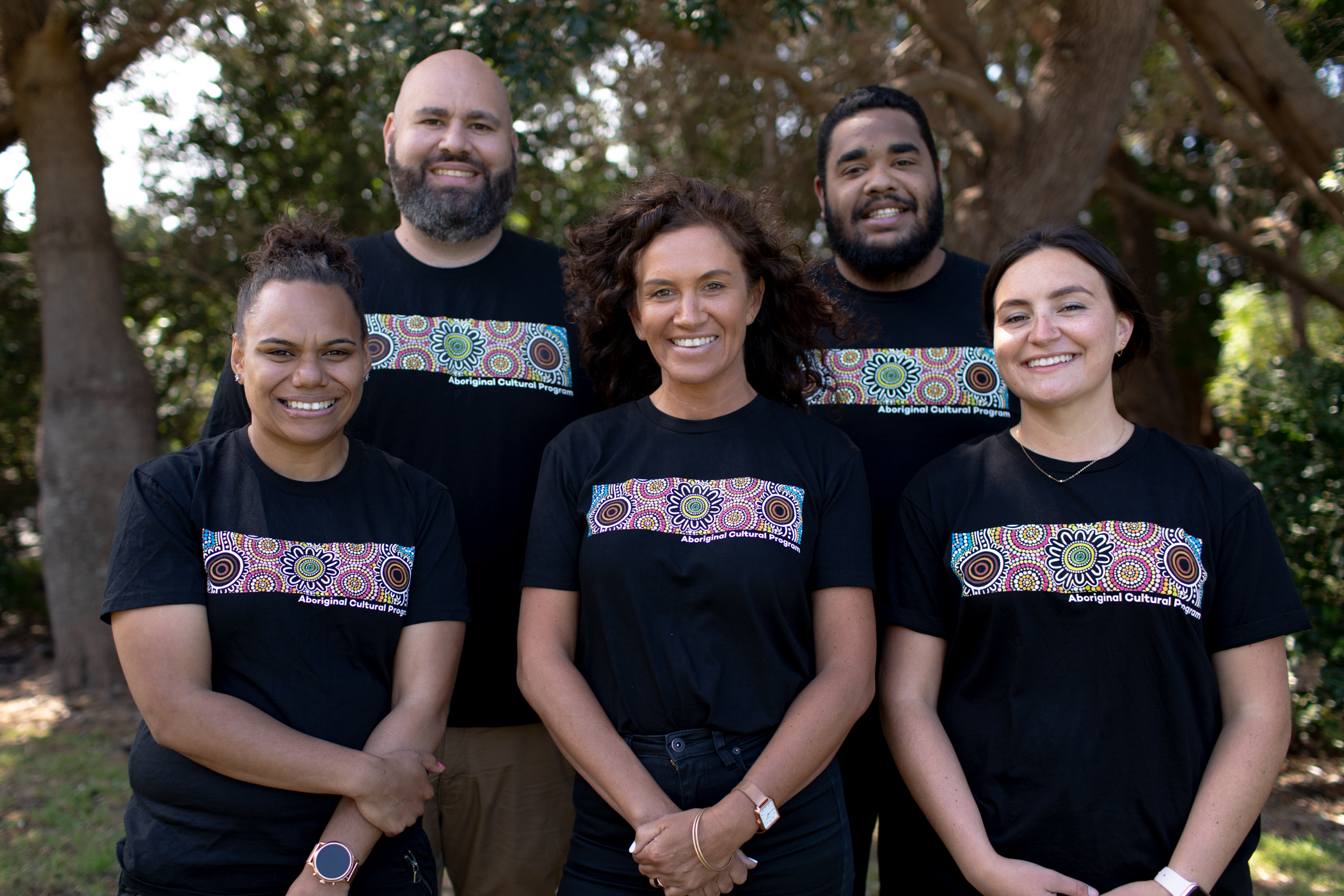
Weave’s Aboriginal staff group
From left to right: Lauren Vosota, Daniel Daylight, Regan Mitchell, Beau Foster and Karlie Stewart
Photo by Tristan Stefan Edouard
“Our culture is the thing that’s going to save us and that culture is the traditional culture and it’s also contemporary Aboriginal Redfern culture of self determination, of community control, of activism. It kind of goes along with Always Was Always Will Be, this will always be Aboriginal land because we’re not going away without a fight, despite the many years and the many Government policies that were put in place to strip us of our culture they haven’t been successful. We always have been and always will be Aboriginal people.”
– Daniel Daylight
Weave's Aboriginal Healing Framework
Weave is committed to working in culturally safe and responsive ways and as part of that commitment we have supported our Aboriginal staff group to develop and document our Aboriginal Healing Framework. This framework guides the ongoing development and implementation of healing-centred practice for our Aboriginal and Torres Strait Islander clients and their communities, with the intention of creating genuine and sustainable healing outcomes.
Weave acknowledges and stands with Aboriginal and Torres Strait Islander people in their ongoing fight against systemic oppression and injustice. We recognise that the social, economic, political, emotional, psychological and physical health and wellbeing of Aboriginal and Torres Strait Islander peoples is dependent upon the dismantling of the systems that continue to impact their communities. We recognise our role in supporting this fight, through supporting our Aboriginal and Torres Strait Islander clients and communities in their individual and collective healing journeys by providing holistic, trauma-informed and strengths-based practice grounded in and guided by our Aboriginal Healing Framework.
In their ongoing fight, Aboriginal and Torres Strait Islander peoples have demonstrated their inherent resilience and strength, standing strong in the face of great adversity and exercising self-determination to fight for and demand justice. Weave acknowledges that Aboriginal and Torres Strait Islander peoples’ strengths and solutions already lie within their communities, and we will continue walking alongside our Aboriginal and Torres Strait Islander clients to support them on their individual and collective healing journeys.
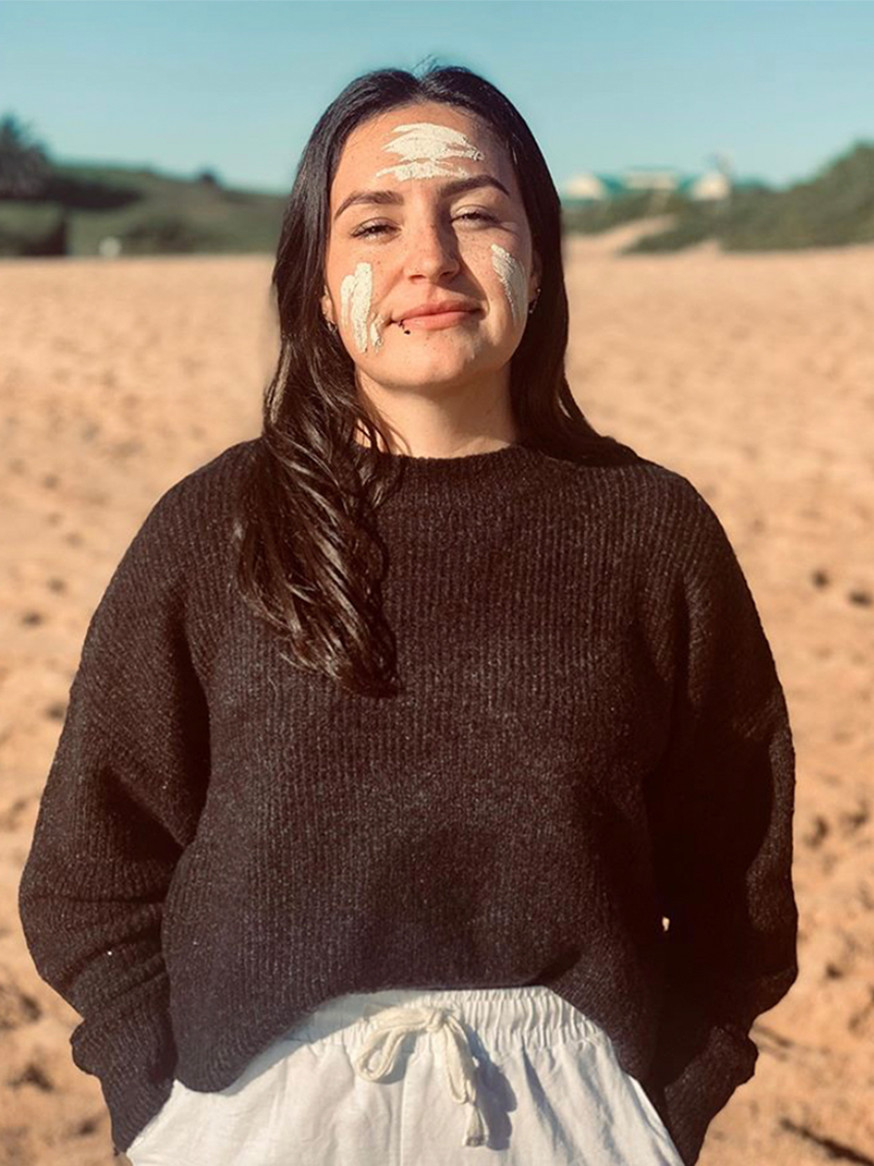
Our Aboriginal Healing Framework was developed by Weave caseworker, Karlie Stewart, guided by our Aboriginal staff – Daniel Daylight, Regan Mitchell, Lauren Vosota, Lauren Ella-Duncan and Beau Foster and Weave Board Member Jonathon Captain-Webb.
Karlie Stewart is a Wandi Wandian Woman from Yuin Country on the South Coast of New South Wales. She lived in Nowra throughout her childhood and spent time around the Nowra, Wreck Bay and Jerrinja Aboriginal communities with her family. Since the age of 10, Karlie has lived on Bidjigal land and has strong connections to the La Perouse Aboriginal community. In early 2019, Karlie graduated with an Honours in Social Work from the University of New South Wales and has since worked as a Child, Youth and Family caseworker at Weave Youth and Community Services. She has been part of the Healing Foundation’s Interim Youth Advisory Group and is passionate about healing for Aboriginal and Torres Strait Islander peoples and communities, particularly from intergenerational trauma as a result of historic and current government interventions.
Karlie has been painting since she was young as a way to connect to her saltwater home on the South Coast. She created the artwork that features in Weave’s Aboriginal Healing Framework.
What You Don't See
“Young people are not the leaders of the future but are the leaders of now.” - Jahin
What You Don’t See is a partnership between young people, City of Sydney, Weave Youth and Community Services, Koori Radio, National Art School (NAS) and the Community Media and Training Organisation (CMTO) that was originally created for the City of Sydney’s Youth Fest 2020 to be showcased as a multimedia exhibition at 107 Projects in Redfern. Due to COVID-19 limitations, What You Don’t See has been completed as an online exhibition and digital campaign.
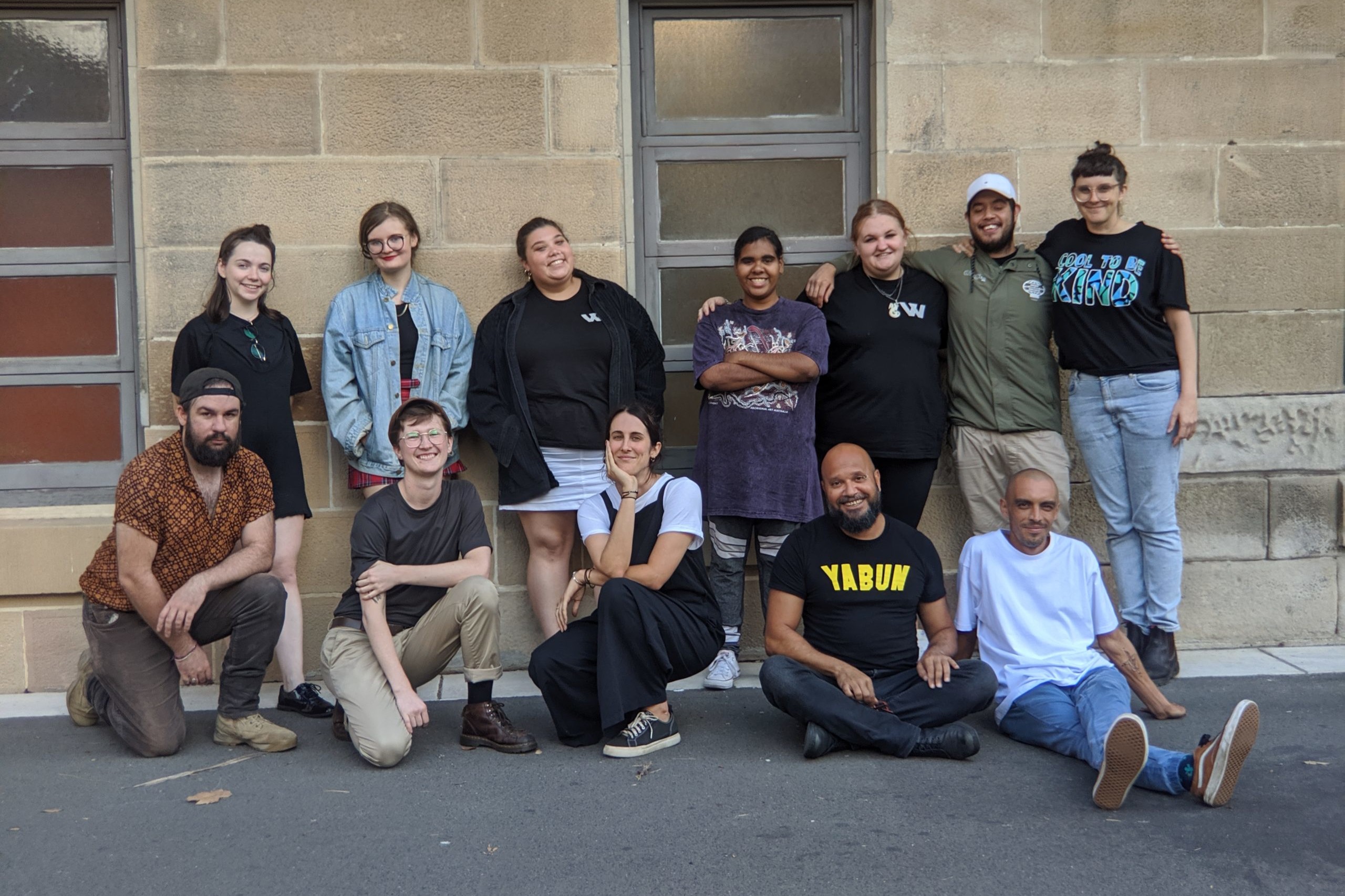
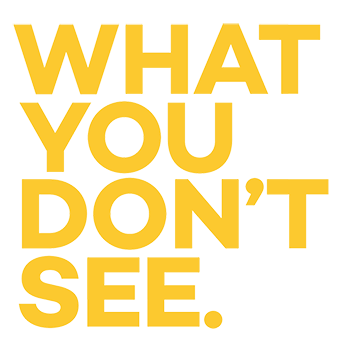
"We are paving the way for the future generation." - April
The project features portraits and audio interviews that capture the stories of 17 young people from NSW, with a focus on the rights of young people. Koori Radio, The National Art School and CTMO ran workshops with the Weave Youth Advocates and other young people from the local community to teach them how to facilitate interviews, tell stories from a strengths-based lens, use audio and editing equipment and develop skills in creative direction, photography, curation and editing.
The project focuses on storytelling and portrait taking and provides a space for young people to discover confidence in themselves, their abilities and their voice. Throughout the project, the young people involved in the project have felt seen, heard and valued through shared vulnerability, respect, support and a whole lot of creativity.
The intimate stories shared within this project shone light on issues such as displacement, gendered violence, mental health, racism and discrimination. They provide an insight into these young people’s achievements in the face of adversity and their hopes and dreams for a future where their rights are respected.
Please honour the courage of these young people and take your time to listen to the insightful, vulnerable and powerful stories at www.whatyoudontsee.org, where you will find a collection of portraits and audio interviews.
Healthy, Strong & Well
An initiative of our #WeaveSurvivalTips campaign, encouraging young people to share what they do to feel #HealthyStrongWell.
What Maddie does to feel #HealthyStrongWell
Mental health is a difficult subject, purely because everyone goes through something in their lives that can dramatically change their state of mind, and that is different for everyone.
The struggles that I’ve been through have taught me that having strong mental wellbeing is about dealing with your issues head-on, having the ability to turn negatives into positives and being aware of yourself and others.
When I was younger I used sport as a way to release my anger and stress, I played basketball all day and I really felt better. I am a little older now and I deal with tough times differently. I found communication either with friends or family really helped lift some weight off my shoulders, and taking time out of my day to reflect on how grateful I am to be here. Exercise is still really important, it puts me in a great mindset.
– Maddie, 17 years old
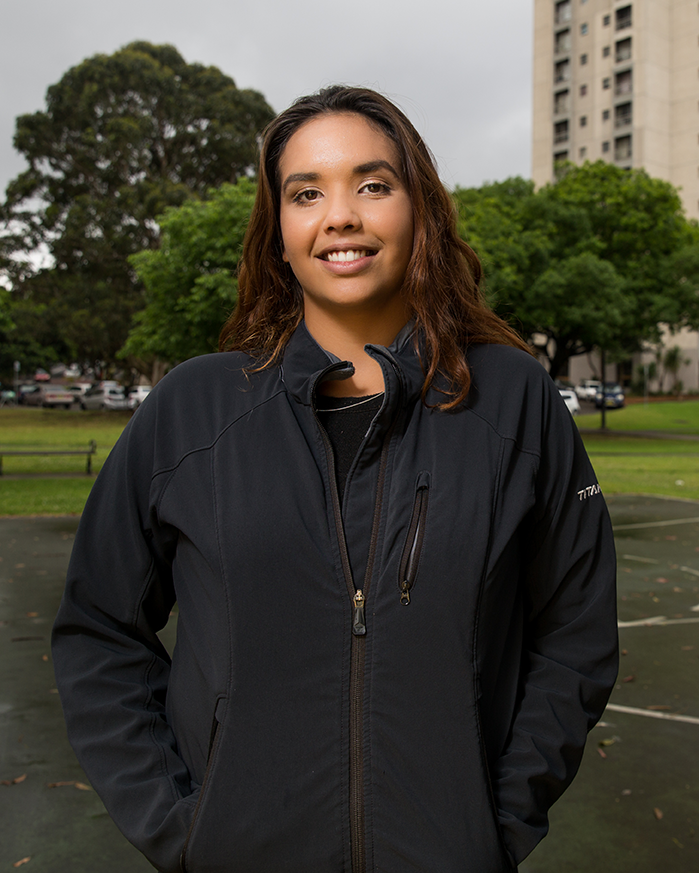
What Connor does to feel #HealthyStrongWell
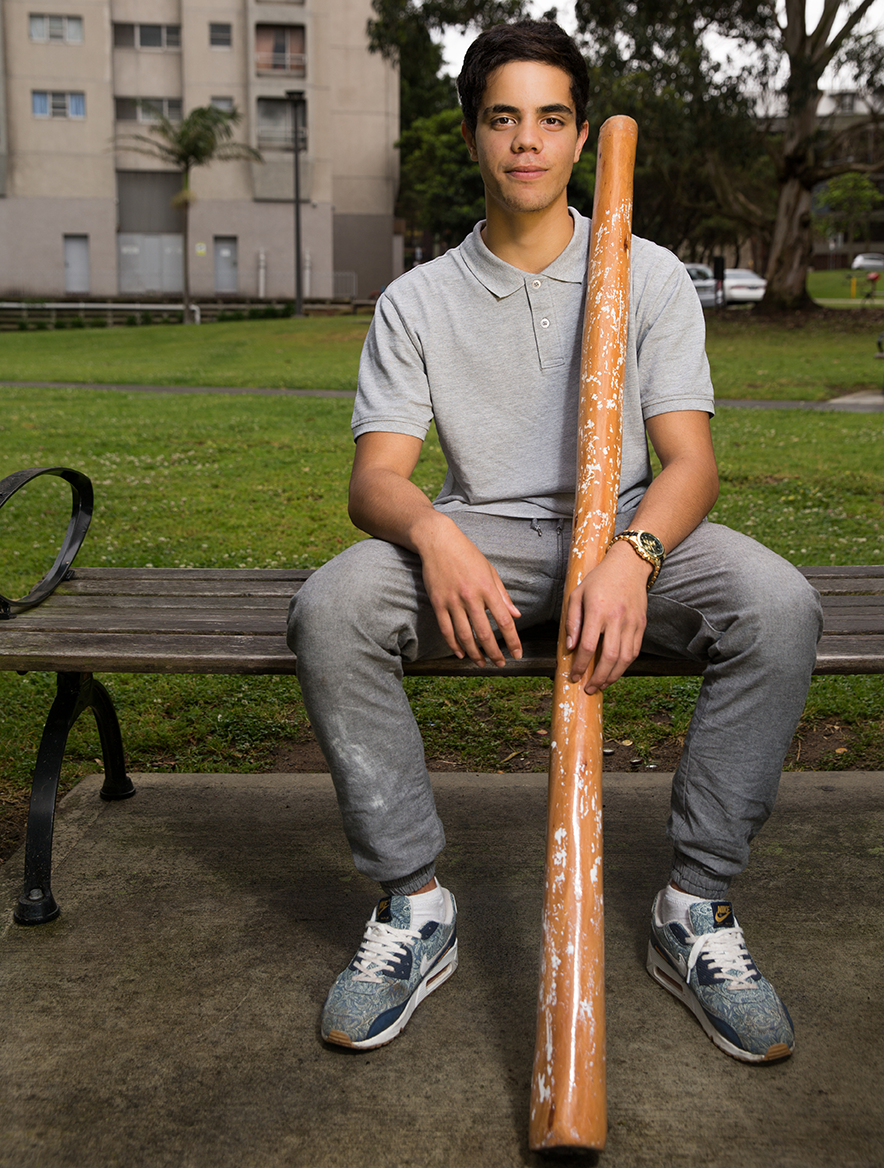
To me, positive wellbeing looks like someone who is happy in all aspects of their life and surrounds themselves with positive people.
When I’m going through tough times I communicate with people that are supportive, play basketball and stay strong and connected to my culture.
– Connor, 17 years old
What Ash does to feel #HealthyStrongWell
I stay healthy well and strong by living an active lifestyle.
Sometimes it’s hard to have time to yourself when being a mum but whether it’s going to the gym, going for a run, working out at home, or by being involved in the community.
I model to my son that to be there for others you need be there for yourself and by doing so I am able to be a better me and a better Mum.
– Ash
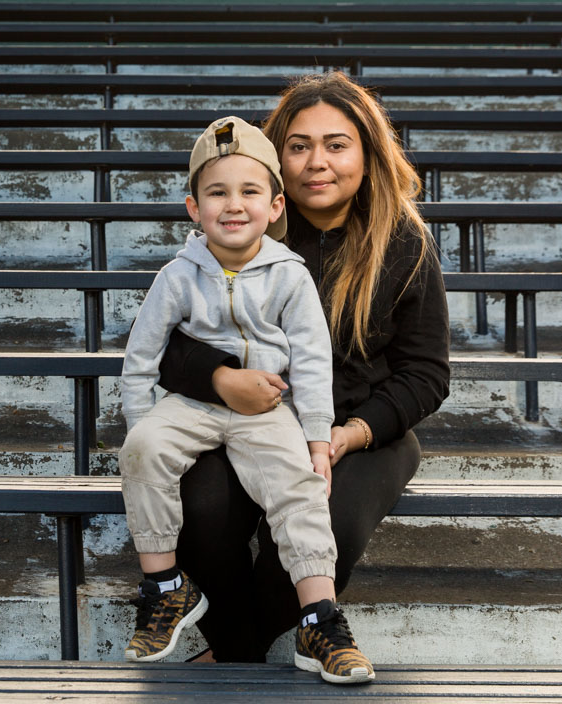
What Dushan does to feel #HealthyStrongWell
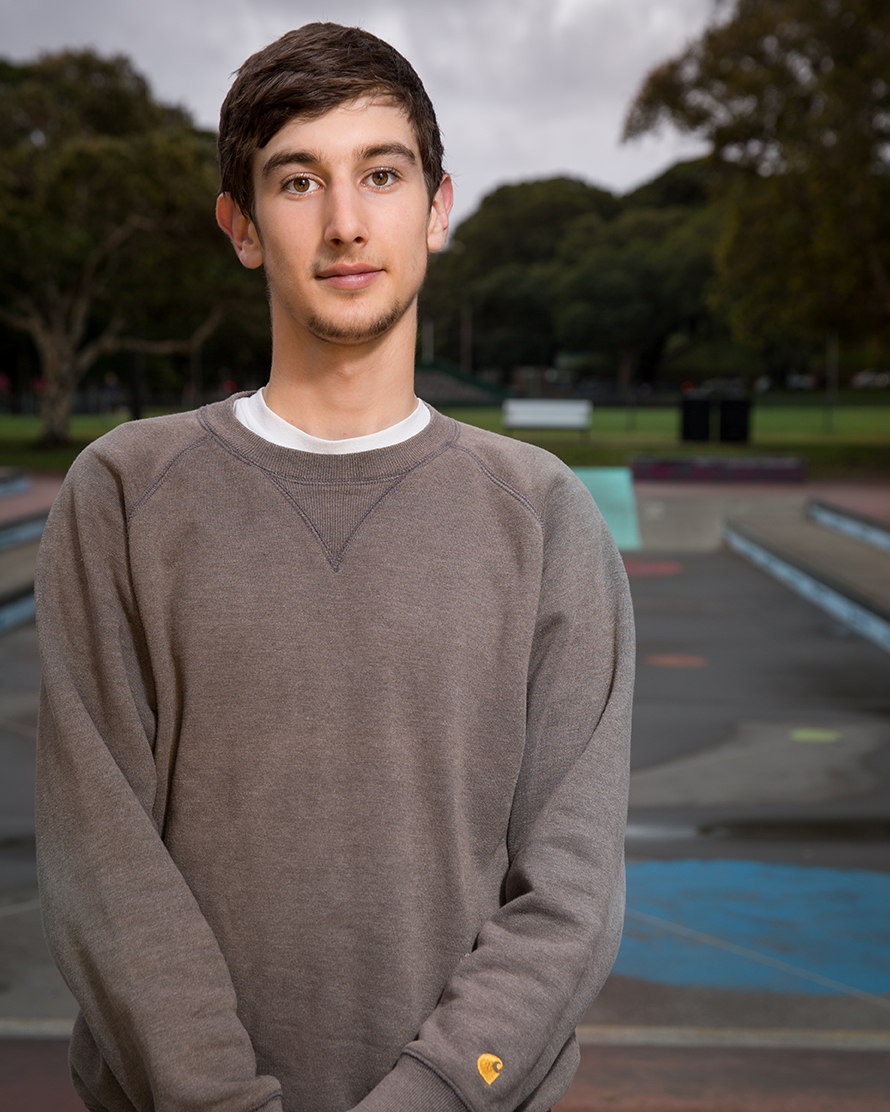
I like to stay mentally and physically healthy by eating well and eating regularly, lots of my friends don’t eat all day and then eat junk food I also play sports with my friends including basketball and soccer and I like going to the gym. Having a routine helps me deal with stress.
Having reliable and trustworthy friends that won’t turn their back on you and that will help you out when you are in trouble is important.
Everyone experiences being down and for me, it helps if I distract myself and try to think about other things.
– Dushan, 18 years old
A project of the Inner City Youth Mental Health Coalition

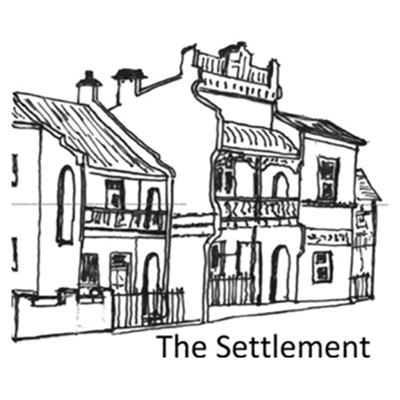
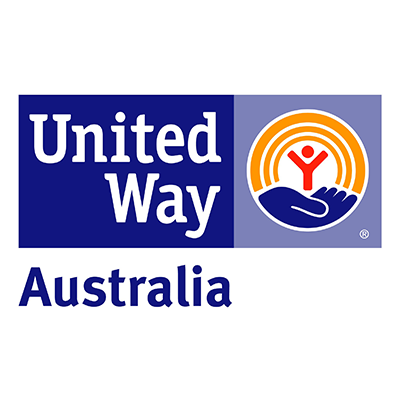
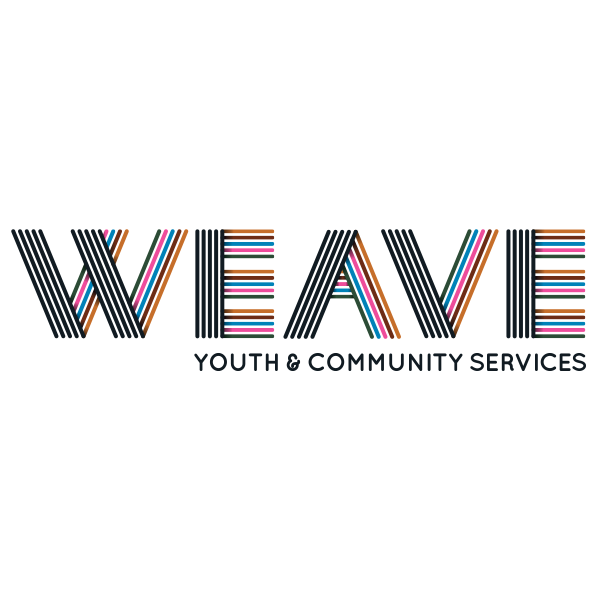
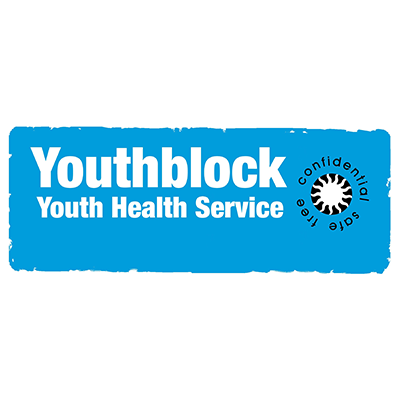
Cool To Be Kind
#CoolToBeKind was developed to promote kindness and positivity, and teach kids how to be kind to themselves, kind to others and kind to the environment.
Our Kool Kids know it’s #CoolToBeKind
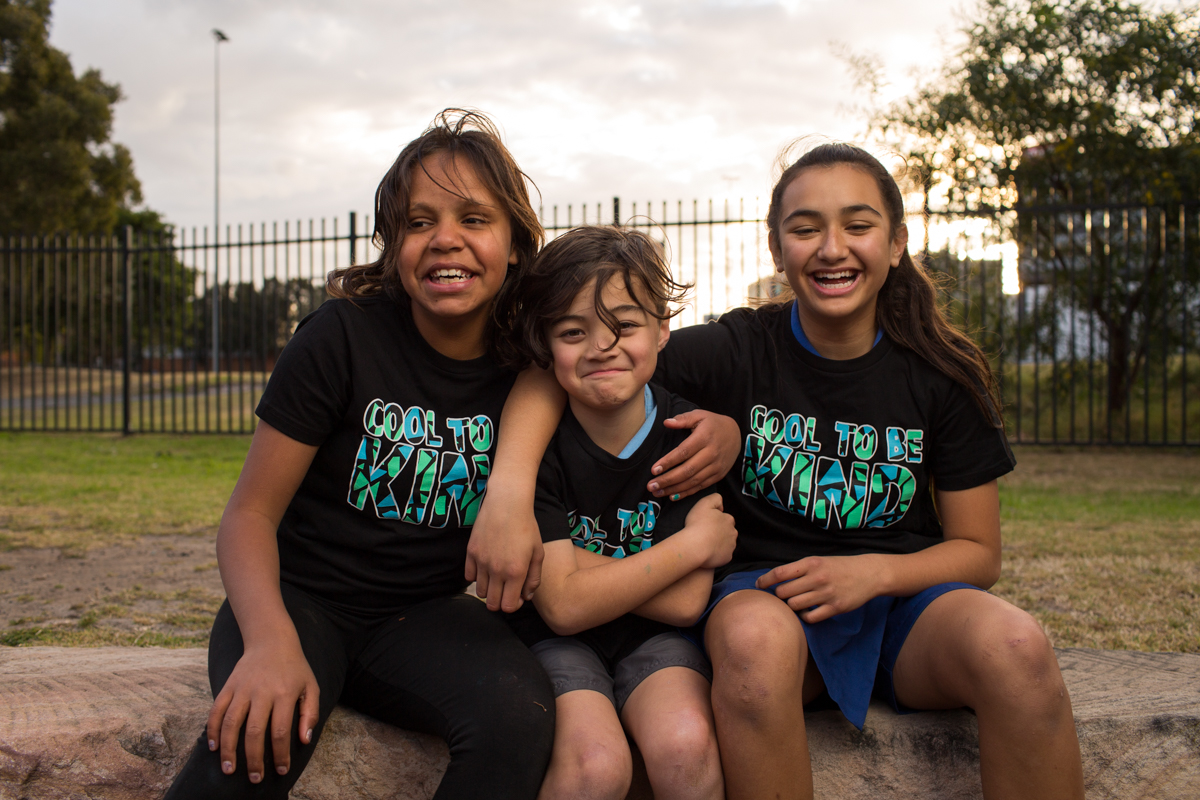
A Campaign Focused on Kindness
The campaign evolved from our Social Issues Strategy, seeking to understand better ways of supporting kids and young people to tackle bullying. Through a structured process that put the community at the heart of the thinking, the idea of a kindness campaign emerged.
We noticed that there were lots of campaigns and projects out there that focused on what to do if you’re being bullied, what to do if you see someone being bullied, and how not to be a bully. But there was nothing to teach and encourage kids the alternate way of being.
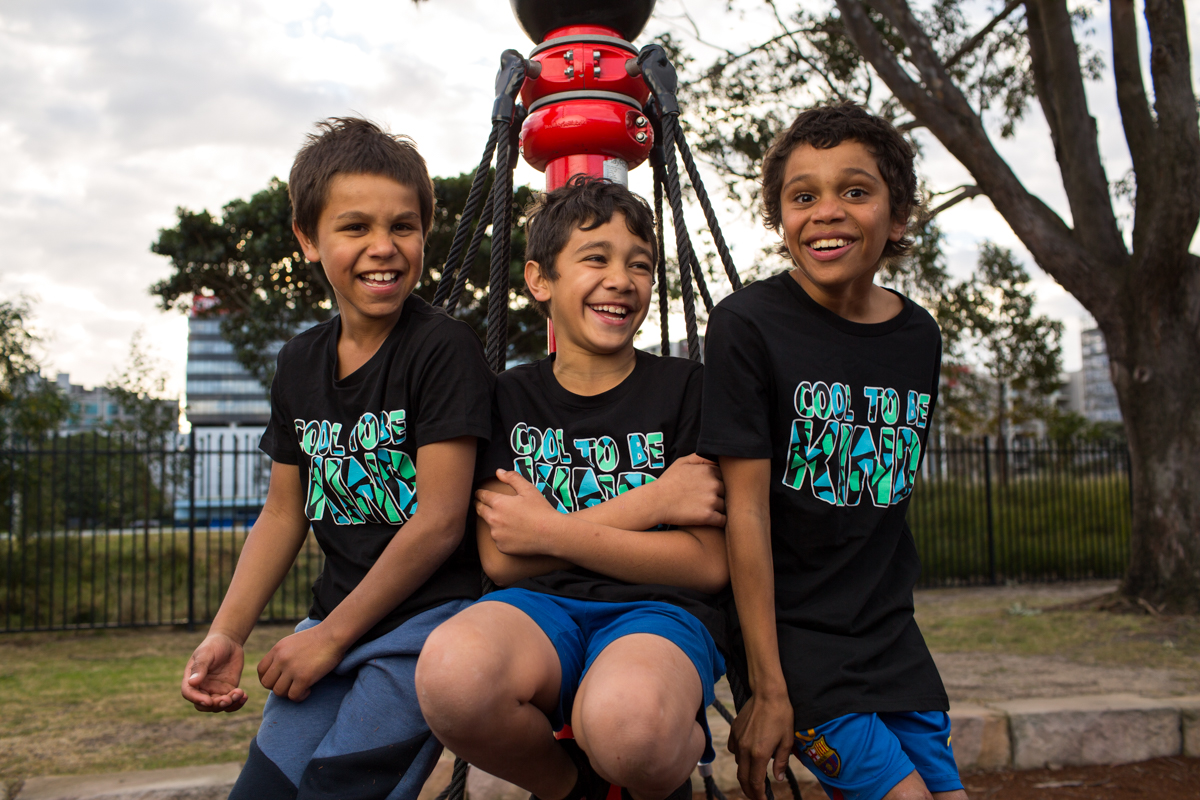
Our Kool Kids know it’s #CoolToBeKind
It's Cool To Be Kind
Cool to be Kind features a series of activities that highlight what it means to be:
- Kind to self
- Kind to others
- Kind to the environment
This has become an overarching framework that informs our program delivery and organisational culture.
We have developed activities to stimulate ideas and encourage people to engage in kindness in their daily lives.
#WeaveSurvivalTips
#WeaveSurvivalTips is a campaign that celebrates our unique ways of coping and surviving, focusing on the small things that make a big difference in surviving tough times.
Launched in 2014, #WeaveSurvivalTips aims to shift the focus on mental wellbeing so we can start talking and celebrating people's strengths and resilience.
#WeaveSurvivalTips celebrates our strengths, our resilience and our unique ways of getting through tough times.
What do you do to get through tough times?
We All Go Through Tough Times
#WeaveSurvivalTips acknowledges it doesn’t matter who you are, where you come from, what your background is, we all go through tough and challenging times.
Our goal is to create a space where people feel safe and encouraged to share their Survival tips and engage in activities and conversations that enhance mental wellbeing. Together, we are creating a resource of Survival Tips that is accessible and constantly expanding, and where people can identify and connect with other people’s experiences and tools for getting through tough times.
Download your #WeaveSurvivalTips card and join us to share your tips on social media.
#WeaveSurvivalTips video workshops with filmmaker Benny Edwards saw a group of local young people capture footage, record interviews and edit short pieces about the campaign and what they do to get through hard times.
What Do You Do To Get Through Tough Times?
We believe that asking “what do you do to get through tough times?” is a positive way of shifting the focus from problem centred thinking to a strengths-based, resilience-focused frame, and we have experienced the power of this shift when people are so willing to share and contribute when they are asked to reflect on their strengths and what works for them.
Download your #WeaveSurvivalTips card and join us to share your tips on social media.

